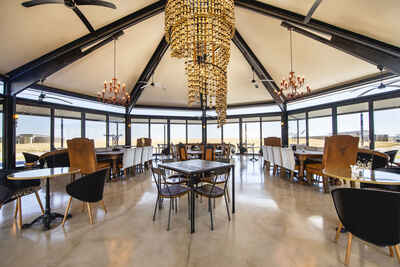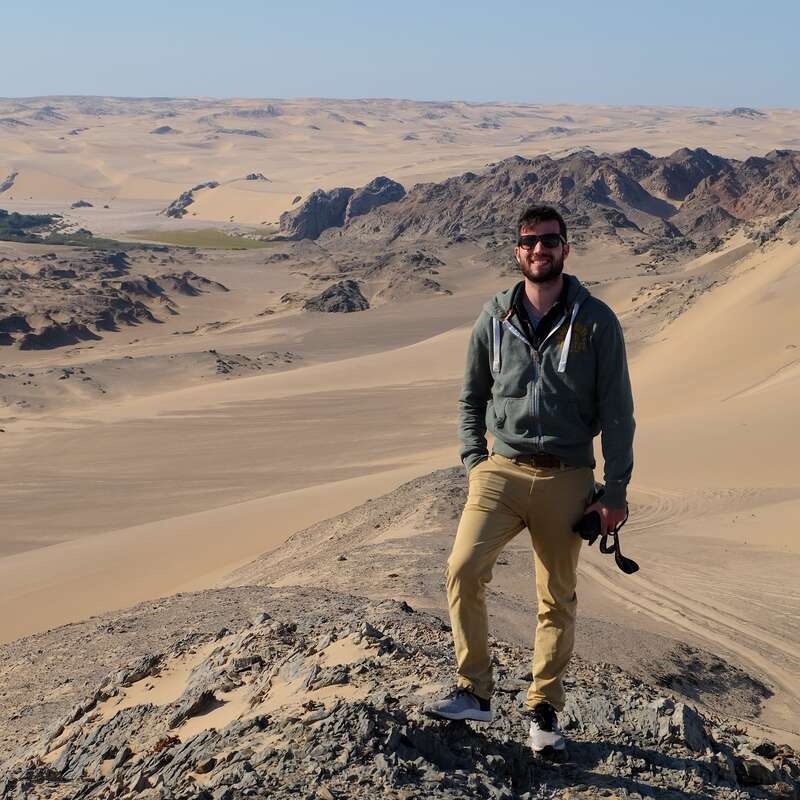About Etosha King Nehale
Close to the northern gate into Etosha, this culturally intriguing lodge combines contemporary glamour with access to an exclusive waterhole.
Style, quirkiness and bold design, underpinned by elements of Ovambo culture, bring contemporary glamour to Etosha King Nehale.
Set close to the northern gate into Etosha, the lodge conveys a feeling for the traditions that are deeply rooted in this area.
As for the Ovambo people, the cow takes centre stage at King Nehale, whose substantial chalets form “horns” each side of its central buildings. Bold cow paintings adorn the walls; cow-hide rugs lie on the floors; a sculpture of a cow's head hangs above the beds.
Look out for odelela – a local striped fabric – in the soft furnishings, then linger over a drink in the central boma, which reflects the heart of an Ovambo homestead.
Yet this is no rustic idyll. From the chalets, huge picture windows and private plunge pools with restful loungers overlook the Andoni Plains, while chandeliers – including one featuring a spiral of carved Ovambo “glasses” – add a touch of elegance.
Key to the lodge, however, is its proximity to the national park – and a waterhole whose access is exclusive to lodge guests. So by all means explore Etosha on your own, but for the safari-goer, this activity could be an extra draw.
Our view
Etosha King Nehale Lodge is a good and rather quirky base from which to explore Etosha National Park. We loved the elements of traditional Ovambo culture, and were particularly struck by the chandelier in the dining area and the modern take on traditional African dishes. The exclusive hide within Etosha is perhaps the biggest draw, ideal for those who want a change of pace on their activities. Note, though, that the presence of big game near the lodge is not as prevalent here as elsewhere the park, and that visiting more game-rich areas involves a relatively long drive in each direction.
Accommodation
40 chalets
Children
Best for 8+
Open
All year
Activities

4WD Safari

Birdwatching

Cultural excursion

Private activities
Traveller reviews of Etosha King Nehale
2 real, un-edited reviews from Expert Africa's travellers.
Arrived 8 Sep 2023, 2 nights
"Etosha King Nehale review"
Overall rating: Excellent
Arrived 10 Oct 2022, 1 nights
"Etosha King Nehale review"
Overall rating: Excellent
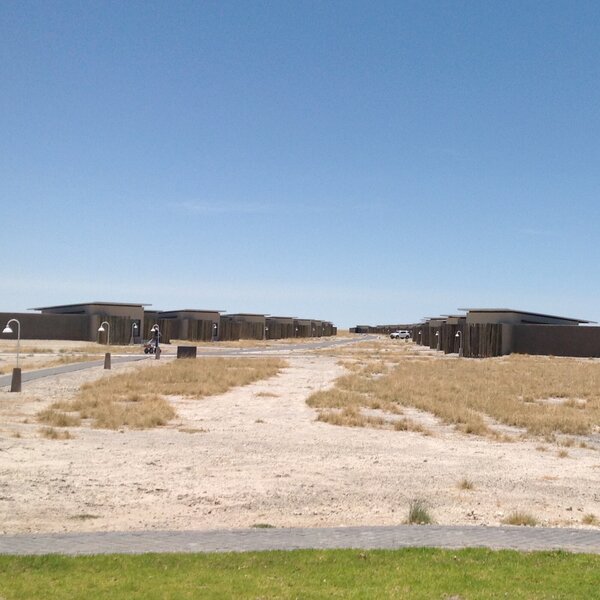
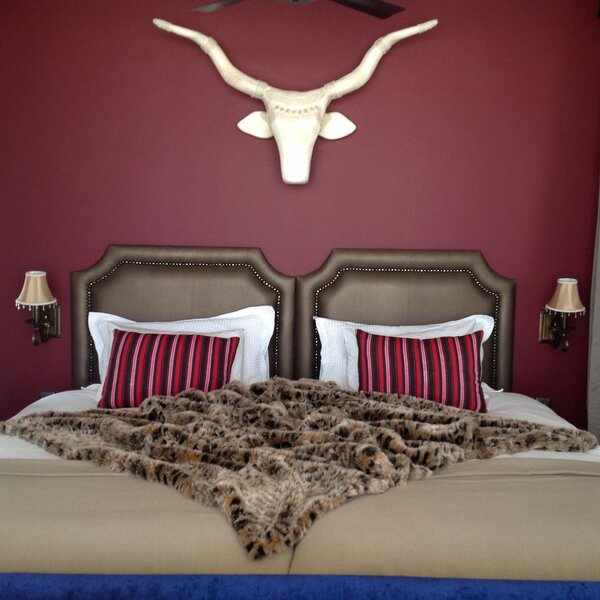
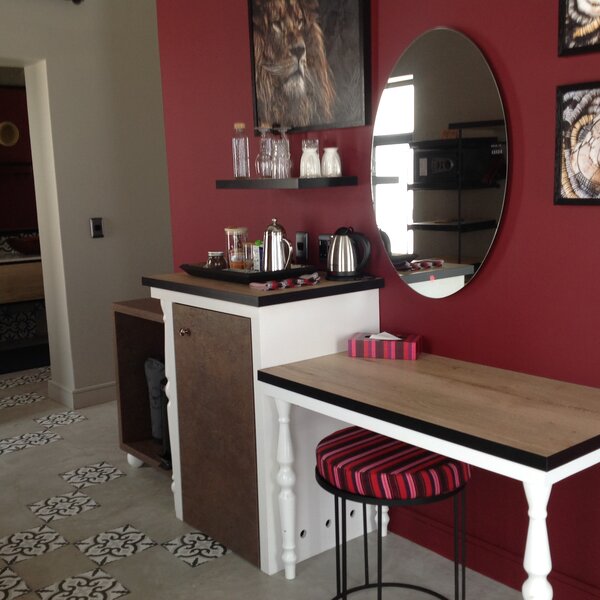
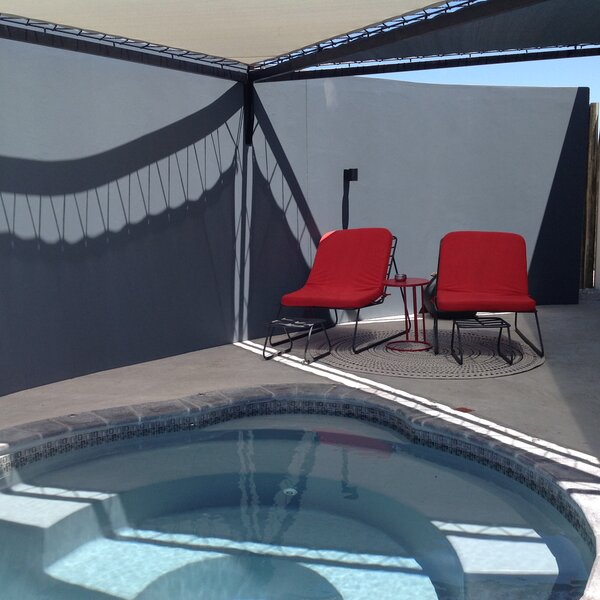
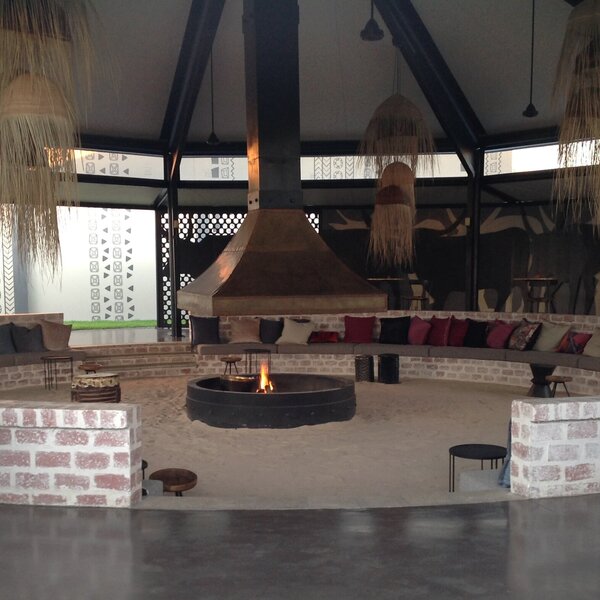

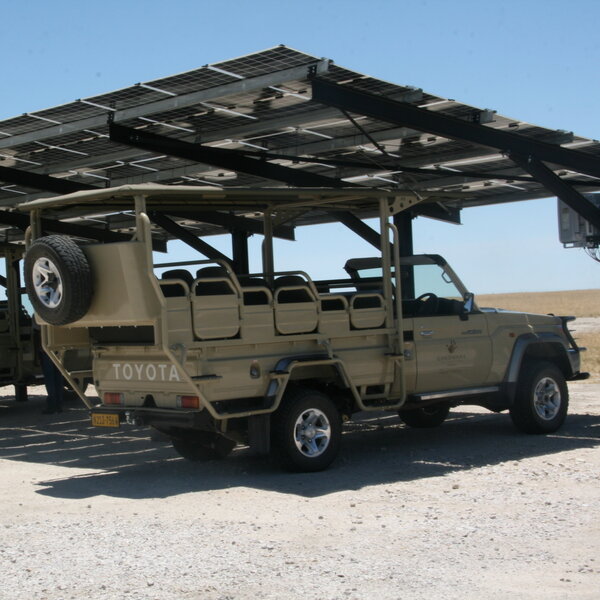
Expert Africa's gallery
When we travel we take lots of photos ourselves to give you a real and un-edited view of the safaris. See our 41 pictures of Etosha King Nehale to get the candid view.
View galleryEtosha King Nehale: Our full report
Opened in June 2020, Etosha King Nehale is set on the grassy, open Andoni Plains, just 2km north of Etosha ...
... National Park's King Nehale Gate. The lodge is well appointed for travellers wishing to explore Namibia's flagship safari park in their own vehicle or on a guided game drive and benefits from exclusive access to a waterhole within the park.
Etosha King Nehale is a member of the Gondwana Collection and caters to individuals, families and small groups. It lies some 45km from the better-known eastern gate into Etosha , and approximately 191km from its sister properties to the south of the park: Etosha Safari Camp and Etosha Safari Lodge. It also combines well with other Gondwana properties, including Hakusembe River Lodge, Damara Mopane Lodge and The Delight in Swakopmund.
The scene is set 1km from the turn off to King Nehale, where visitors are confronted by a giant wooden throne, apparently in the middle of nowhere. It's definitely worth a photo stop.
Surprises continue on arrival, where the entire lodge is laid out like the head of a traditional Ovambo cow, with the main building forming the head and the chalets extending out on either side like horns. We loved the elements of traditional Ovambo culture on our visits in December 2020 and May 2022. We were pleasantly surprised at how well-thought-out and stylish the décor was. The staff were very welcoming, warm and friendly too.
Although the lodge has 40 spacious chalets, it does not feel big or busy or impersonal. Twin or double chalets make up the south side, while the north side features family rooms whose larger bedroom – with a sleeper couch and additional mattress on request – can accommodate a family of up to five. Like the rest of the lodge, the chalets are mainly built using sandbags for sustainability, with a huge front window and a private plunge pool that both overlook the Andoni Plains.
A frosted glass door leads into the entrance lobby of each chalet, kitted out with a vanity table and plenty of storage. Soft furnishings here, picked up in accents elsewhere, are of odelela, a traditional Owambo fabric made up of coloured stripes. Décor is largely a light stone colour, offset by bold Spanish-red feature walls.
Through an open doorway, the bedroom boasts twin three-quarter beds (often made up as a king-size double) beneath a ceiling fan, draped with mosquito nets and with a cow's head sculpture above the headboard. At the foot of the beds, a decadent-looking royal-blue sofa faces the picture window, with a cow's hide rug on the floor. Chandeliers – reflected in a huge wall mirror – add glamour and sparkle to the décor and bold contemporary artwork brings further impact.
On a practical level, you'll find a small hall table with a telephone and charging station, tea and coffee, a decanter of complimentary sherry, and a bar fridge stocked with complimentary water, fruit juice and a bottle of bubbly.
A barn-style door opens into the spacious, beautifully designed en-suite bathroom, decked out with grey, black and white encaustic tiles, well-spaced twin washbasins and mirrors, a toilet and a large walk-in shower behind a high wall. Luxury bio-degradable toiletries come as standard, and chandeliers introduce a touch of the exotic.
From the entrance lobby, a second door leads to a shaded veranda, where a plunge pool and two brightly coloured sunloungers with footrests invite serious relaxation.
All the chalets are linked to the main area by wide paved walkways. The distance from some can be a bit of a walk, but with parking in front of each chalet, it is also possible to drive. As a result, note that the “walkways” are shared by vehicles and pedestrians.
The main building houses a reception area, with a well-stocked curio shop of largely Namibian products. Replicas of the traditional Ondonga thrones provide a fun photo opportunity, with two smaller red chairs for children. When we visited, the staff dressed us in the traditional odelela garments of the Ovambo people.
First, though, is a huge circular boma area with a soft sandy floor, a firepit in the middle, and lots of comfortable seating with scatter cushions. Reminiscent of the olupale or parlour in a traditional Ovambo homestead, it's where the family would gather in the evenings.
The dining area and bar, inside a huge barn-like hall with high ceilings, is hung with elegant chandeliers, one made up of hundreds of traditional carved Oshiwambo drinking “glasses”, set in a spiralling design. Take your pick from comfortable leather sofas, high-backed armchairs and individual dining tables and chairs – from medieval to farmhouse style to modern. Huge windows and glass doors bring the surrounding plains into the room, while outside a shaded veranda with more tables and chairs – many carved in Oshiwambo and English with facts about Ovambo culture – looks over well-tended lawns. The Ovambo influence continues into the food served here, something that isn’t very common in Namibia. It was refreshing to see modern takes on traditional dishes, although the mopane worm (a kind of caterpillar usually served fried or dried) starter won’t be to everyone’s taste.
Activities at Etosha King Nehale focus on game drives into the national park, either self-driven or aboard one of their four open-sided vehicles for a half- or full-day guided game drive. However, the big draw for guests is a superb hide overlooking a waterhole within the park that is exclusive to guests at the lodge. The drive takes around an hour each way, but we think it’s worth it. Built out of an old shipping container and complete with a flushing toilet and refrigerator, this is one of the best-equipped hides we’ve seen in Namibia. Keen photographers should note that the hide is not sunk into the ground and, depending on water levels, the water’s edge can be some distance away. However, whiling away a few hours here waiting to see what comes to the waterhole is an enjoyable switch from the usual game drives.
Wildlife aside, there are plans to introduce cultural visits to a traditional Ovambo homestead in the future. All activities can be booked on arrival at the lodge.
While we enjoyed our time at King Nehale, and the hide is a real draw, the property’s location still presents something of a quandary, for several reasons. While the lodge’s design invites the outside in, the Andoni Plains are large and somewhat featureless, so the views are a little flat, with the proximity of the park fence and the gate building detracting further. In addition, the lodge is set on communal land where you are as likely to see livestock as wildlife – not something we have experienced anywhere else in Etosha. Finally, there are few waterholes or game-drive loops in this north-eastern section of Etosha, so game drives inevitably head south towards Namutoni and the eastern Von Lindequist Gate. As it takes up to an hour to reach these more southerly areas, and the park is only open from sunrise to sunset, guests at King Nehale miss out on the best wildlife watching in the early morning and late afternoon. Despite the lodge’s many positives, it’s important to take into consideration these factors before deciding on a stay at King Nehale.
Activities
4WD Safari
Birdwatching
Cultural excursion
Private activities
Families & children
- Attitude towards children
- Children are welcome at Etosha King Nehale.
- Property’s age restrictions
- There are no age restrictions.
- Special activities & services
- None
- Equipment
- Highchairs and cots are available on request.
- Generally recommended for children
- Easy access the park entrance make the lodge suitable for families who want to explore Etosha in their own vehicle. Within the lodge grounds, there is plenty of open space for children to run around and play near the family rooms, on the north side of the camp.
- Notes
- Children must be supervised at all times, especially when outside as vehicles share the wide pathways that link the chalets to the main area, and there is no fence around the camp. Additionally, the small plunge pools are unfenced.
Food & drink
- Usual board basis
- Half Board
- Food quality
- During our stay in May 2022, the buffet meals offered sufficient variety to cater to many dietary requirements. Staff were both helpful and accommodating.
Between 6.00am and 9.00am, a sumptuous buffet breakfast was laid out, comprising yoghurt, a choice of cereals and traditional Ovambo porridge (mielie pap); fried, scrambled, poached or boiled eggs, as well as omelettes with a choice of fillings; cheese-and-onion sausages; bacon; a range of breads and toast, plus cheese scones, croissants and freshly baked muffins; sliced tomatoes, cucumber and salad; a selection of cheeses and cold meats; and various condiments and preserves.
Although we did not have lunch here, we understand that an à la carte menu is served between midday and 3.00pm.
Our dinner, available between 7.00pm and 9.00pm, was a delicious trip around Africa, with a buffet of dishes from different countries. Entrées, served in traditional Oshiwambo woven baskets, consisted of vet koek – a type of South African fried bread, mopane worms with chilli sauce, and chicken liver paté. There was also the option of a hearty bean soup for those who were feeling less adventurous. Our main courses were grilled kudu or beef steak with a mushroom jus, slow-cooked ‘marathon’ chicken and beef tongue in mustard sauce, served with caramelised pumpkin puffs, mielie pap, Kavango spinach, and various salads. To finish, the “queen's dessert trolley” was laden with peppermint ice-cream and a different kind of vet koek (more like a doughnut this time) accompanied with a homemade orange liqueur. - Dining style
- Individual Tables
- Dining locations
- Indoor and Outdoor Dining
- Further dining info, including room service
- Room service is not available here.
- Drinks included
- No drinks are included except for those in the chalets: a couple of complimentary bottles of water, a decanter of sherry, fruit juice and a bottle of bubbly. Bottled water is available from the bar.
Our travellers’ wildlife sightings from Etosha King Nehale
Since mid-2018, many of our travellers who stayed at Etosha King Nehale have kindly recorded their wildlife sightings and shared them with us. The results are below. Click an animal to see more, and here to see more on our methodology.

100% success

100% success

100% success

100% success

100% success

100% success

100% success

100% success

100% success

100% success

100% success

100% success

100% success

100% success

0% success

0% success

0% success
Getting there
- Location
- Etosha National Park, Namibia
- Ideal length of stay
- Two or three nights
- Directions
- Etosha King Nehale is 2km from the King Nehale Gate into Etosha National Park, and 47km from Namutoni and Onkoshi camps.
- Accessible by
- Self-drive
Communications
- Power supply notes
- There is a back-up generator in case of a power cut. There are plenty of plug sockets in each chalet.
- Communications
- There is very good, fast free WiFi throughout the lodge, including in the chalets. Each chalet also has a telephone for internal communications.
- TV & radio
- None
- Water supply
- Mains
- Water supply notes
- Every chalet has a flushing toilet and fully plumbed basins and shower.
Health & safety
- Malarial protection recommended
- Yes
- Medical care
- The nearest doctor is in Omuthiya, about 24km away. In a medical emergency a medivac to Windhoek would be arranged.
- Dangerous animals
- Moderate Risk
- Security measures
- There are night-watchmen on duty during the hours of darkness.
- Fire safety
- There is a fire extinguisher inside every chalet, near the entrance.
Useful info
- Disabled access
- On Request
- Laundry facilities
- A full laundry service is available for an extra charge.
- Money
- There is a safe in every chalet.
- Accepted payment on location
- Payment may be made with Visa and MasterCard, and in cash with Namibian dollars or South African rand.
Plan and book your trip with Expert Africa
All of our trips are tailor-made, so we'll always adapt them to suit you. Talk to an Expert and let us plan and arrange your perfect trip.

Talk to an Expert
Call or email us now! We’ll match you with the Specialist in our team who is best suited to help you. Then together we can start planning your trip.

Set up your itinerary
Based on our experience and your ideas, your specialist will create a detailed, costed itinerary. We’ll refine it together, until we have a trip that you’re perfectly happy with.

Prepare for your trip
The same Specialist will make the seamless arrangements for your trip, send you detailed travel documents, and be available to answer any questions before you depart.

Travel with peace of mind
After you set off, you’ll be cared for by our partners in Africa, most of whom have worked with Expert Africa for decades. And if you ever need us urgently, we’re available 24/7.

When you return
We love to learn about your trip, and so will always be grateful if you’ve the time to give feedback to your Specialist when you return.
Etosha King Nehale's location
Look closer at the environment and surroundings of Etosha King Nehale .
Other lodges in Etosha National Park
Alternative places to stay in this same area.
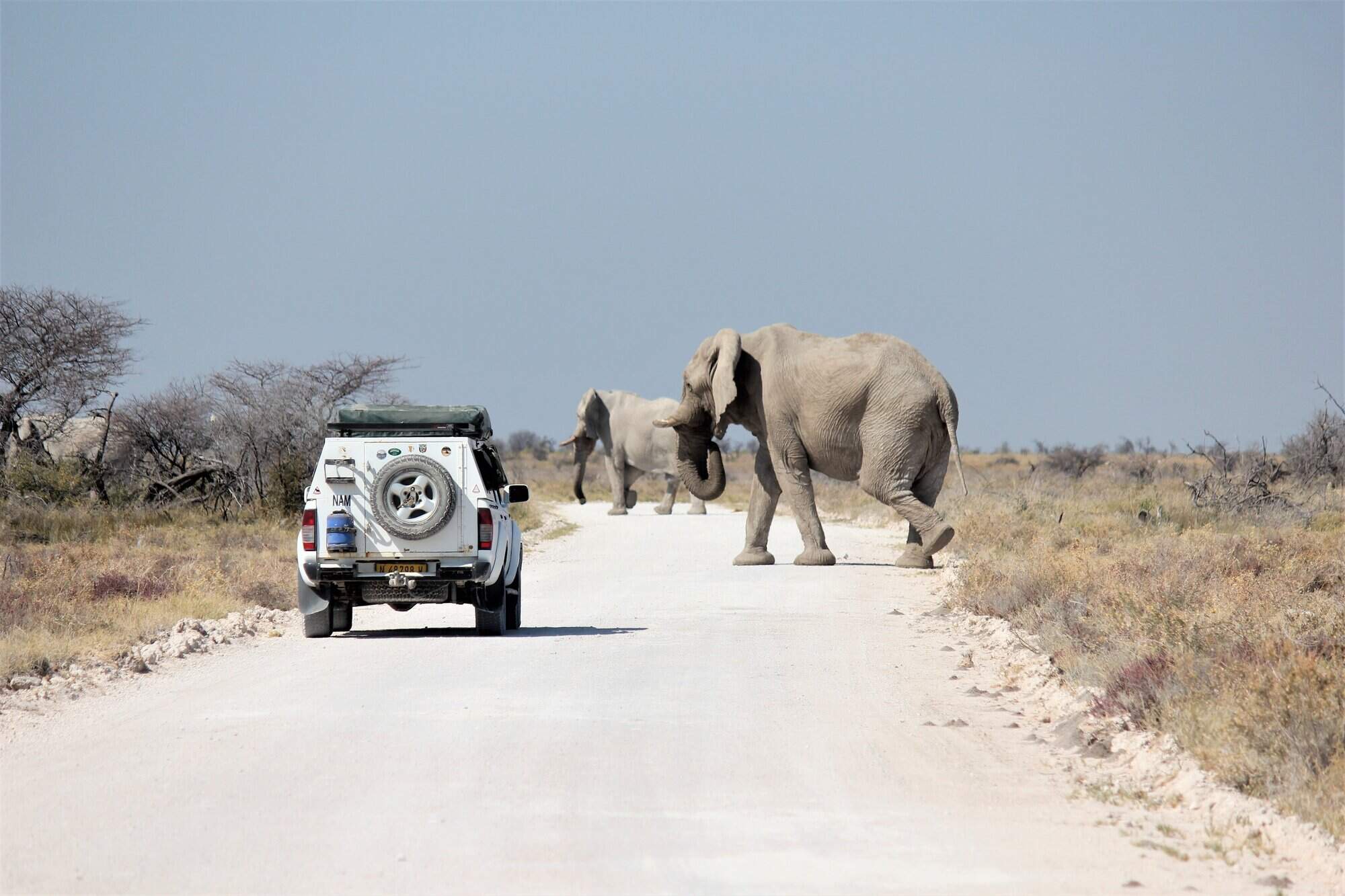
Okaukuejo Camp
Set within Etosha National Park, Okaukuejo Resort is a large camp with a productive, floodlit waterhole.
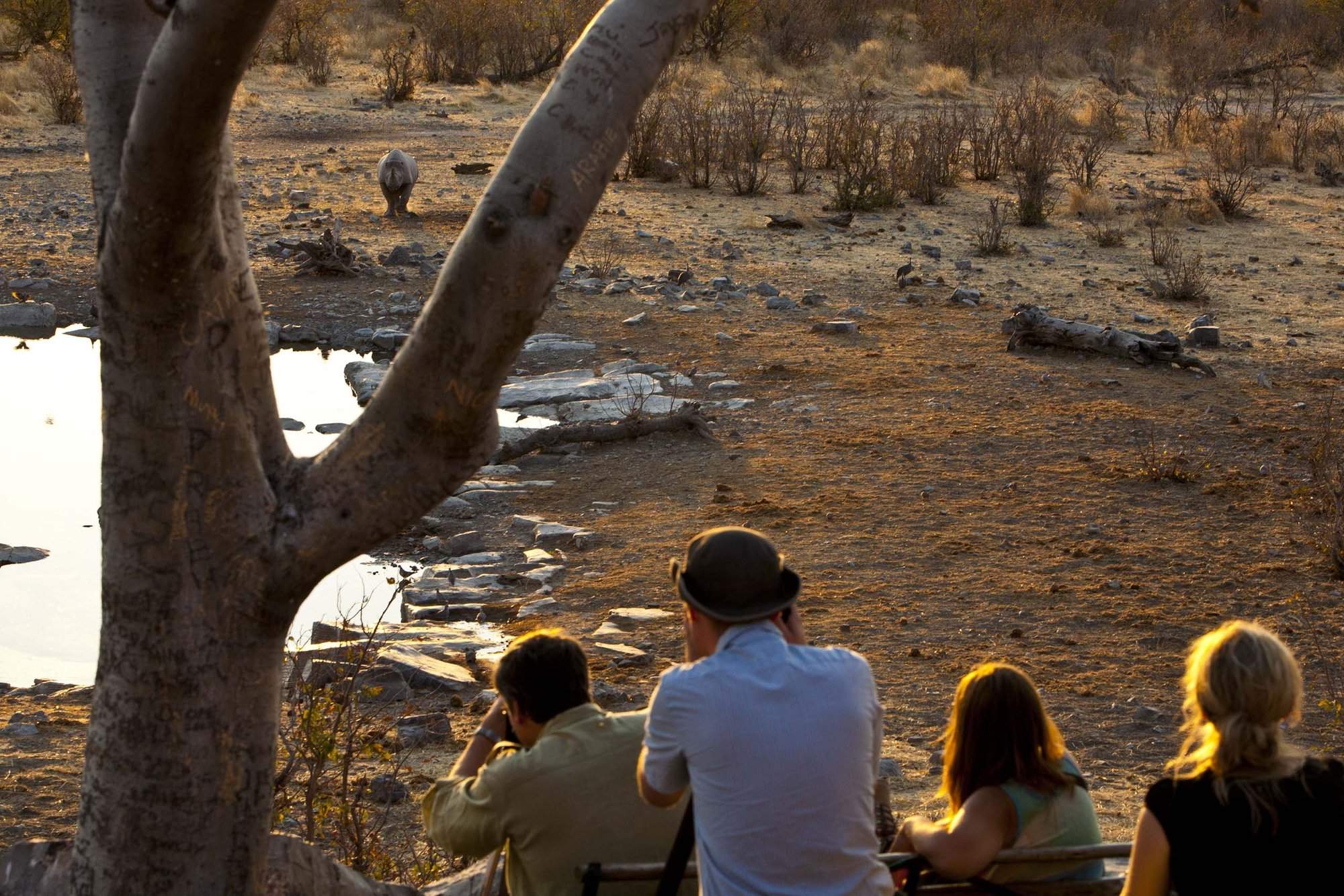
Halali Camp
The smallest of Etosha's erstwhile restcamps, overlooking its own floodlit waterhole, Halali has a superb location near the centre of Etosha Pan.
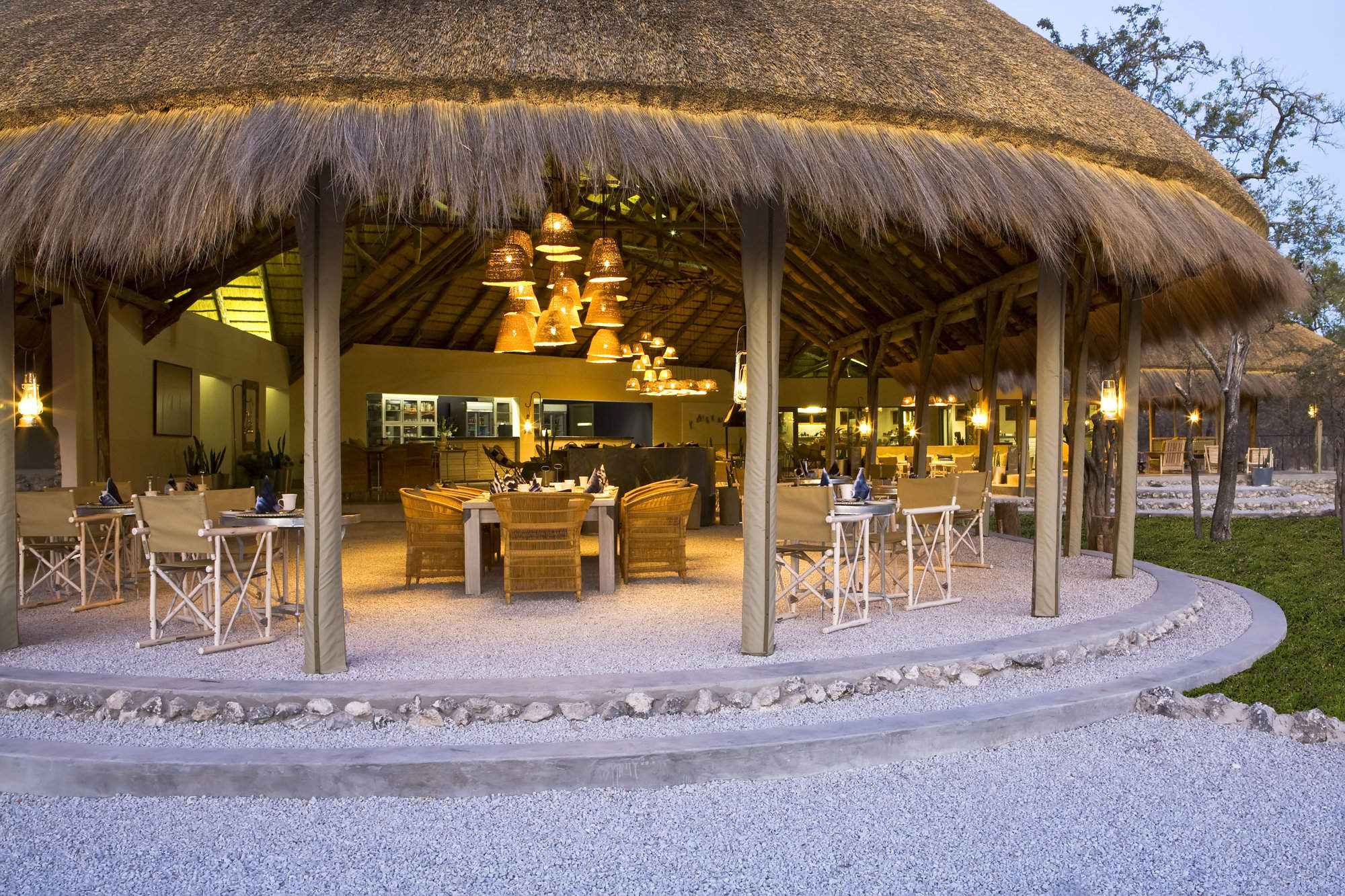
Mushara Bush Camp
The family-friendly Mushara Bush Camp offers great value and is an excellent base from which to explore Etosha National Park.
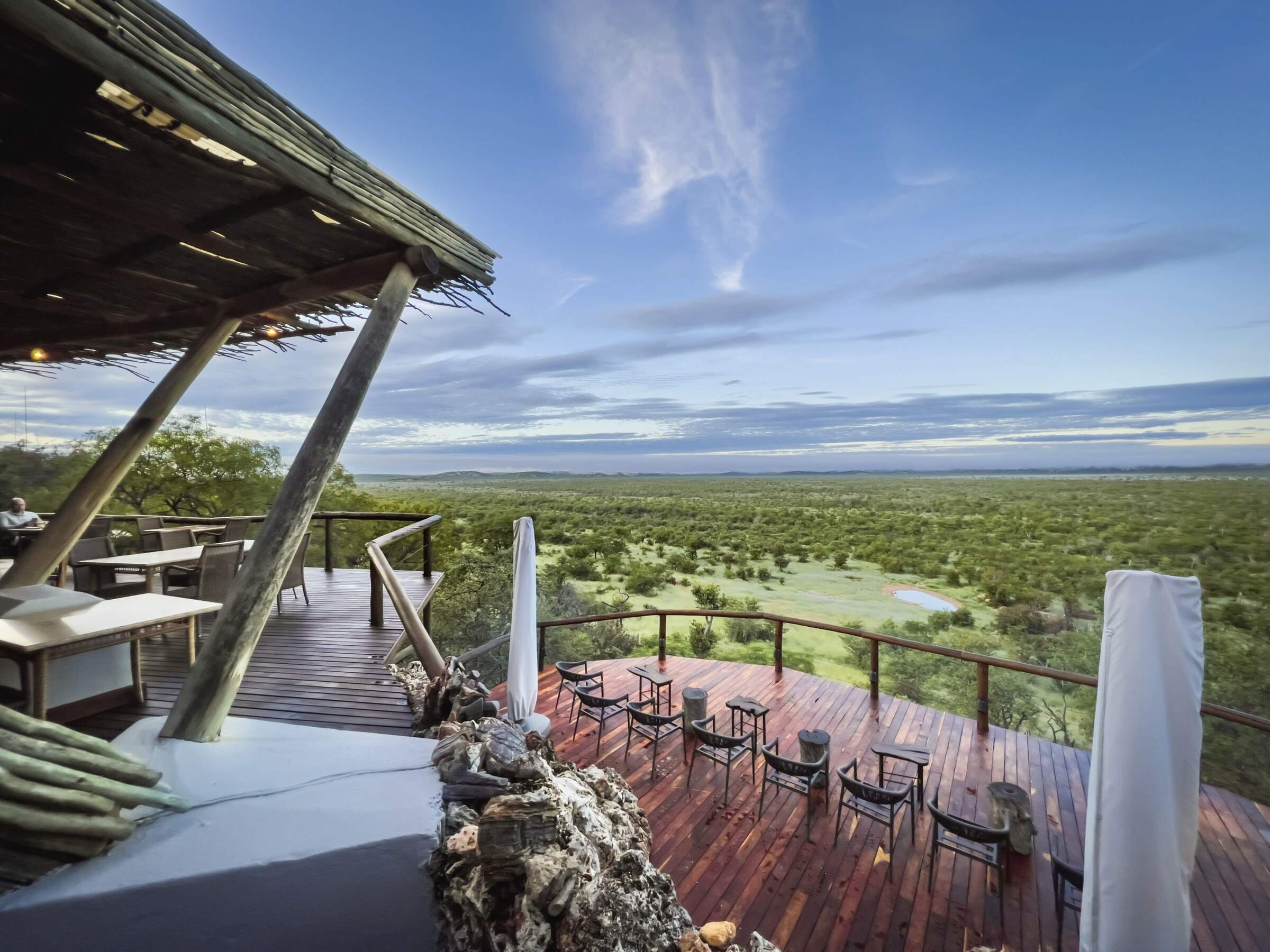
Ongava Lodge
With fantastic views over a private reserve bordering Etosha, the smart Ongava Lodge offers driving and walking safaris on the reserve, and guided drives in Etosha.
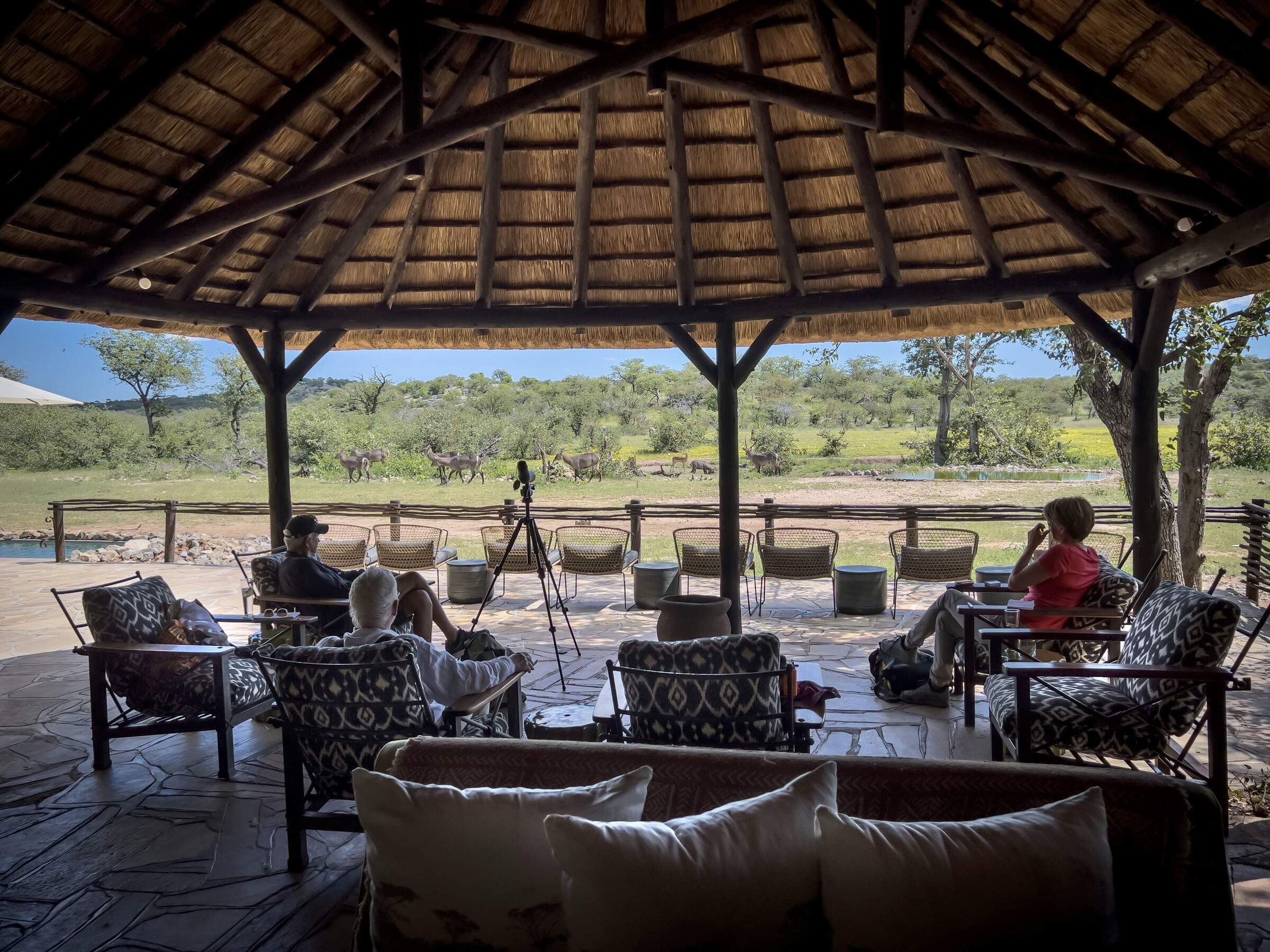
Ongava Tented Camp
Set around a waterhole on a private reserve, the small Ongava Tented Camp combines understated comfort with activities that include walks and night drives.
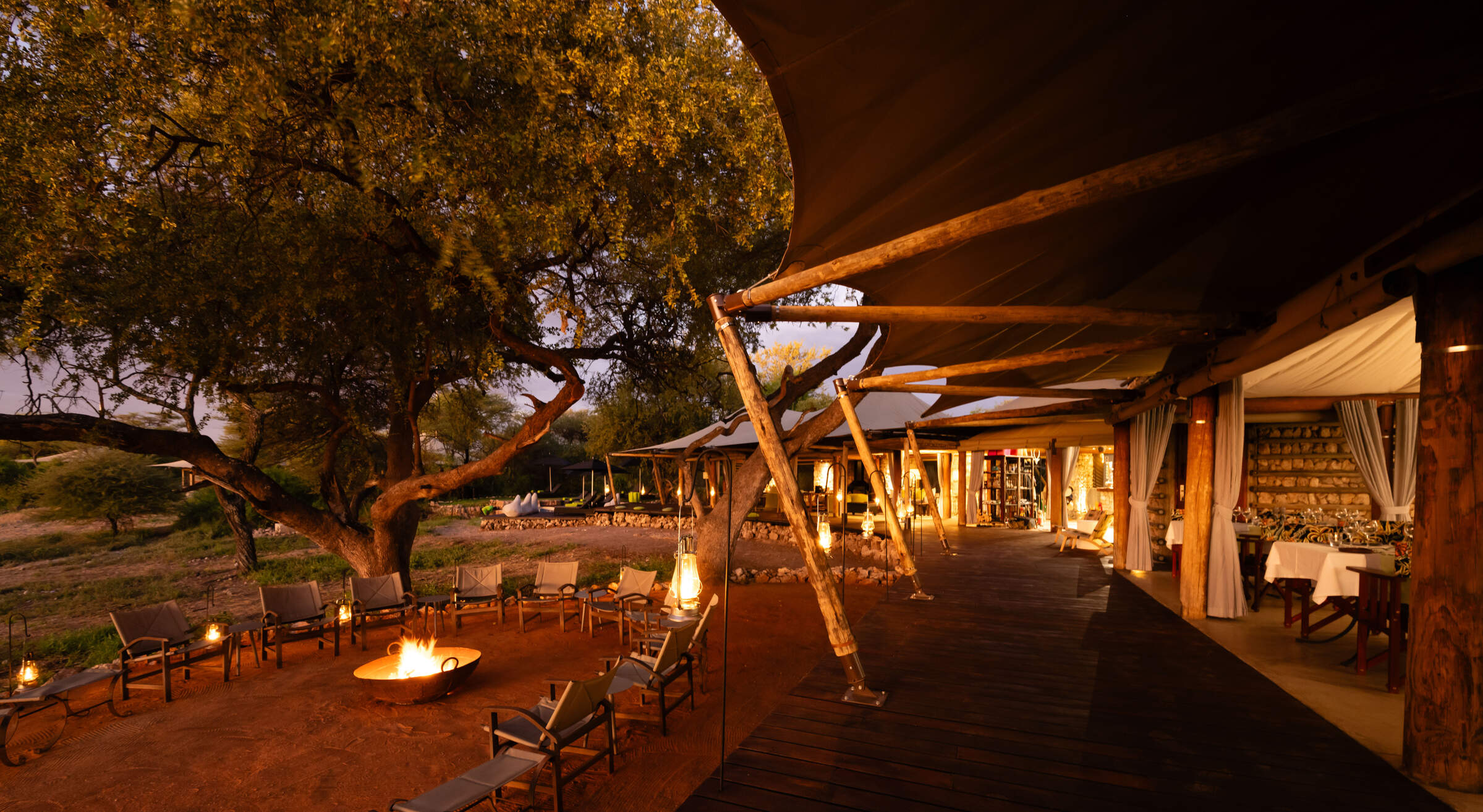
Onguma Tented Camp
Onguma Tented Camp is a lovely, little tented camp which centres around an attractive waterhole a short drive from the Von Lindequist Gate to eastern Etosha.
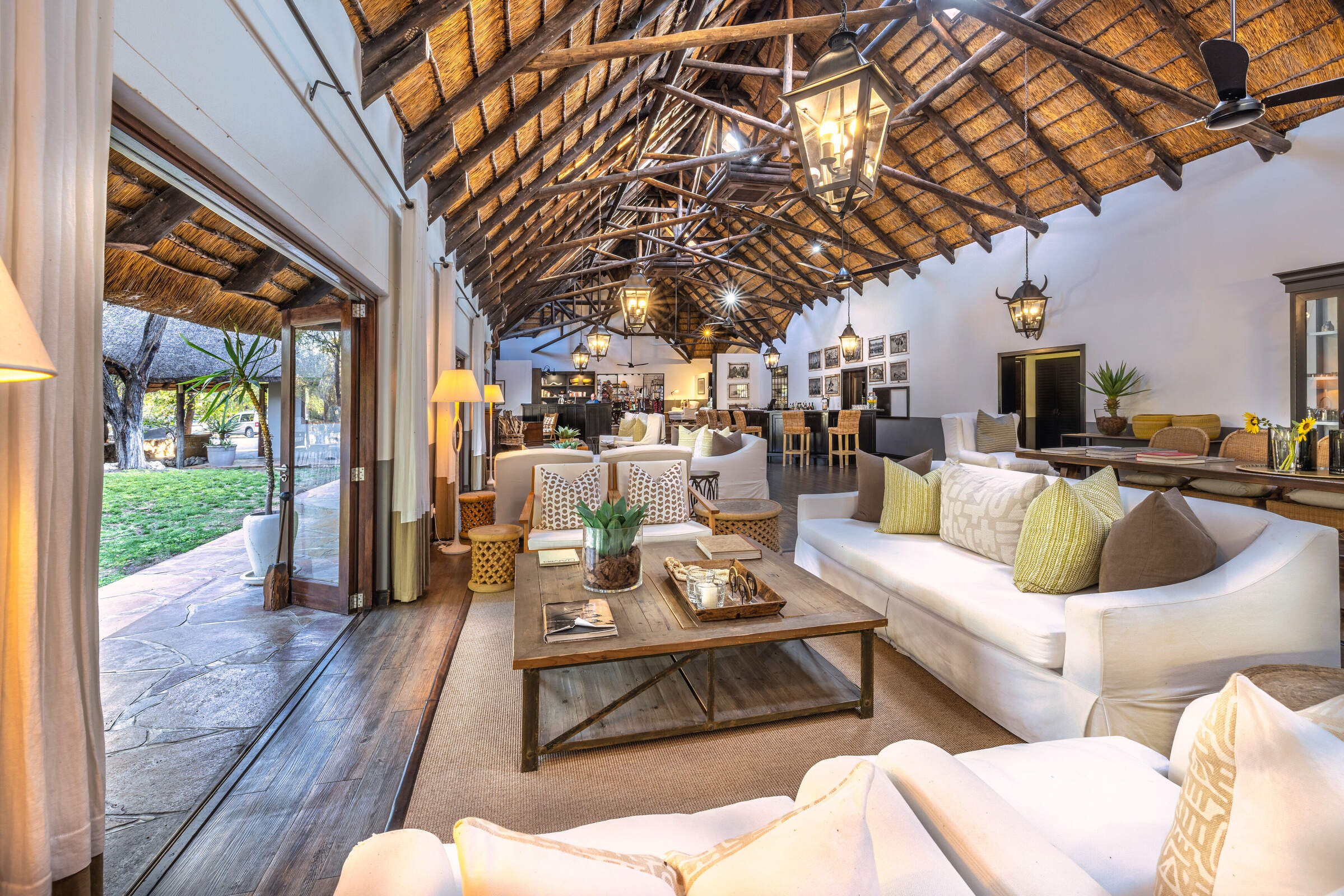
Mushara Lodge
Close to the eastern entrance to Etosha, the comfortable Mushara Lodge is well-placed for exploring the park in your own vehicle or on a guided drive.
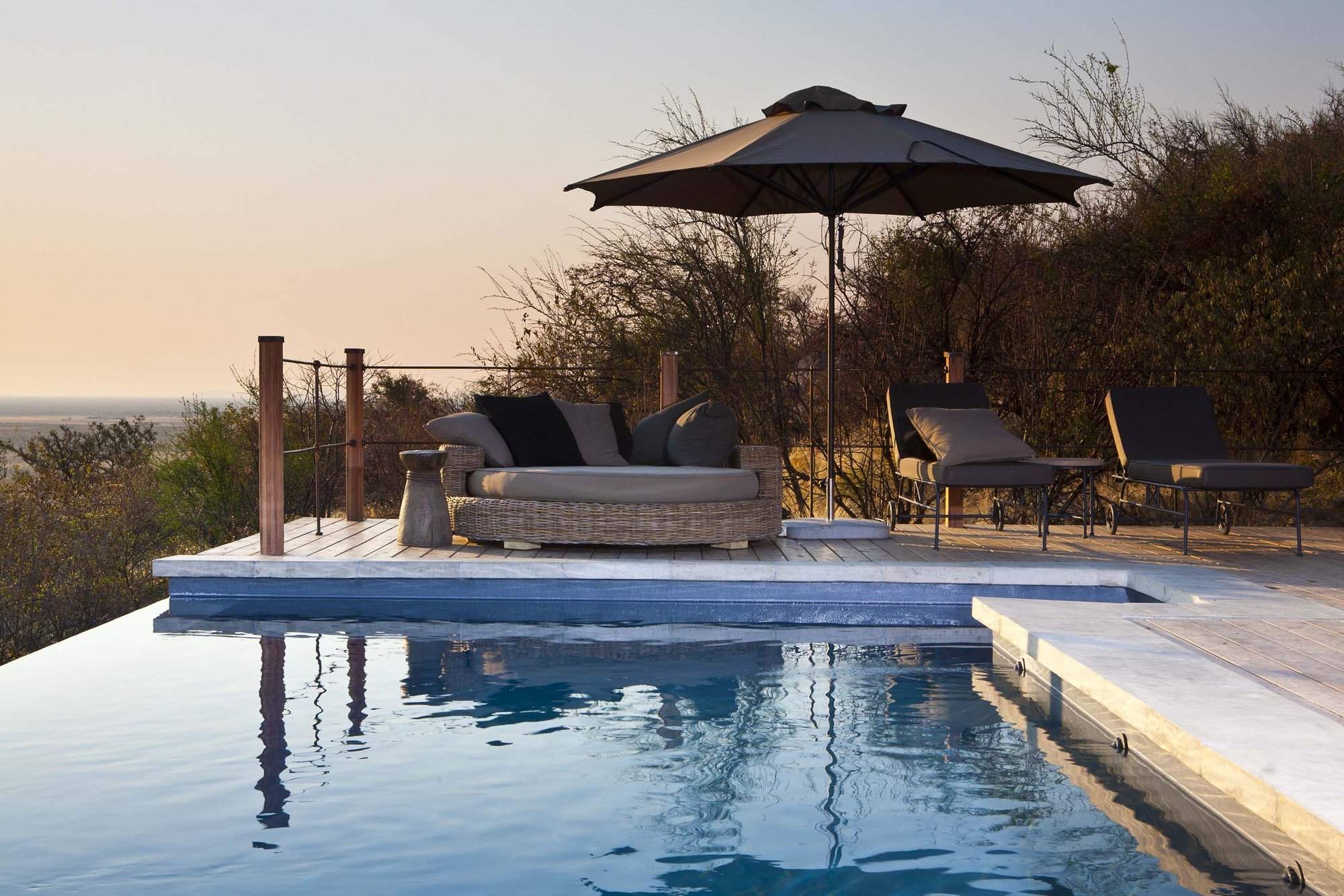
Dolomite Camp
Opened in 2011, Dolomite Camp allows visitors access to the far west side of Etosha National Park, which was previously off limits to most visitors.

Onguma Bush Camp
For great wildlife viewing without breaking the bank, the affordable and understated luxury of Onguma Bush Camp could be perfect.
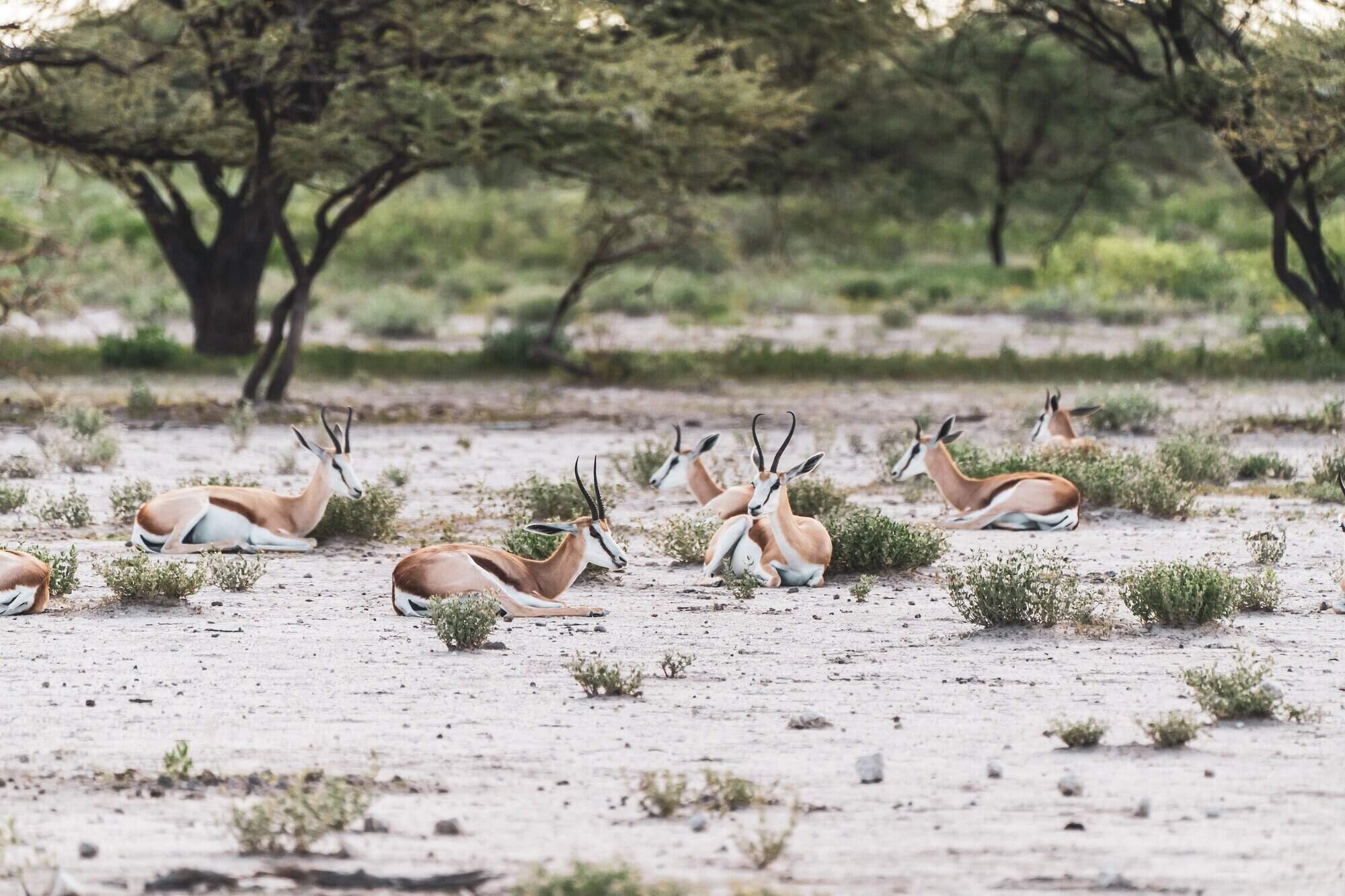
Namutoni Camp
Centred on an old fort, the government run Namutoni Camp is located just inside Etosha National Park, close to Fisher's Pan.
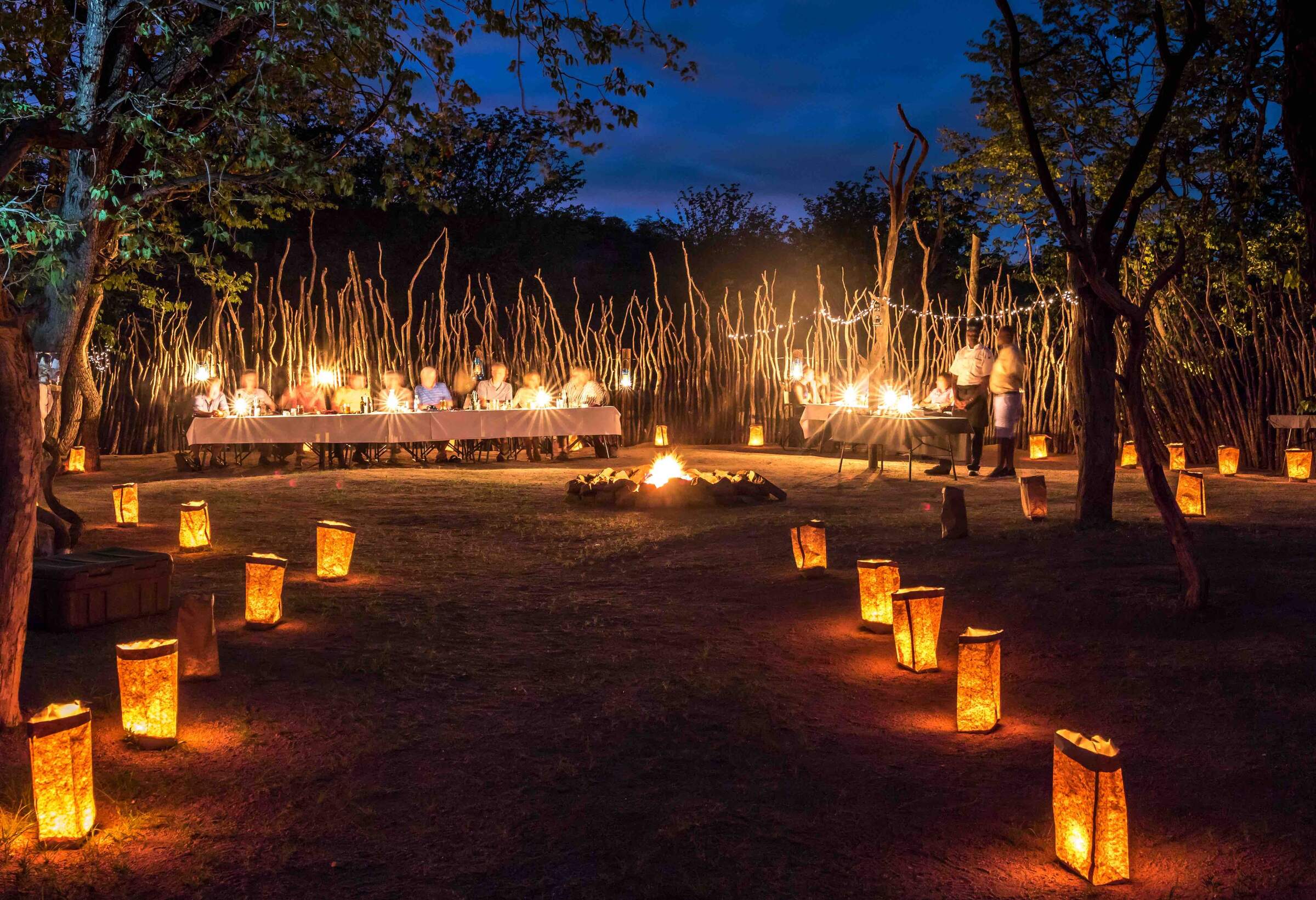
Hobatere Lodge
To the west of Etosha National Park, on the edge of Damaraland, Hobatere Lodge offers good game-viewing on its own reserve.
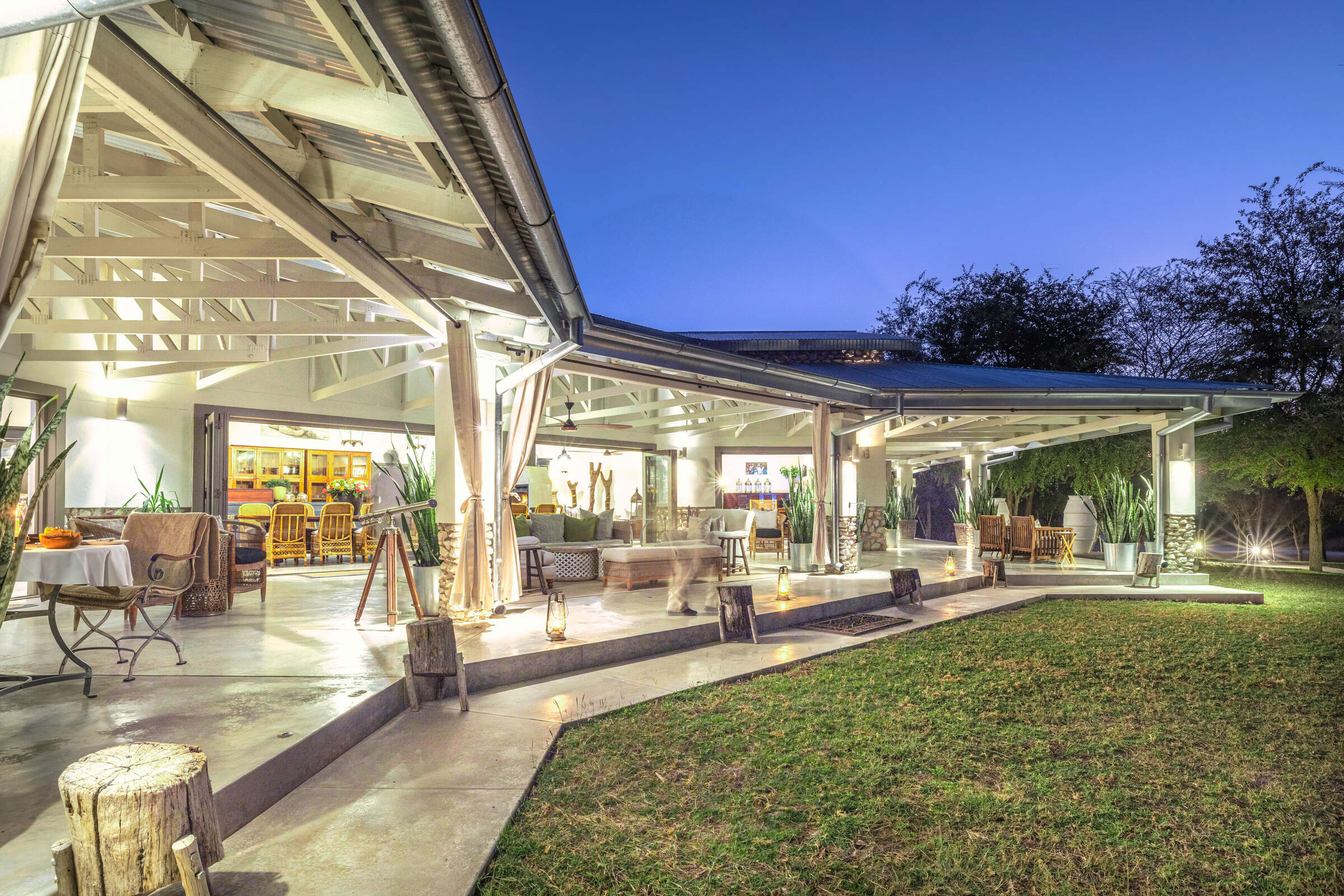
Mushara Outpost
Intimate and luxurious, Mushara Outpost is well-placed on a private reserve to explore nearby Etosha National Park on your own or on a guided drive.
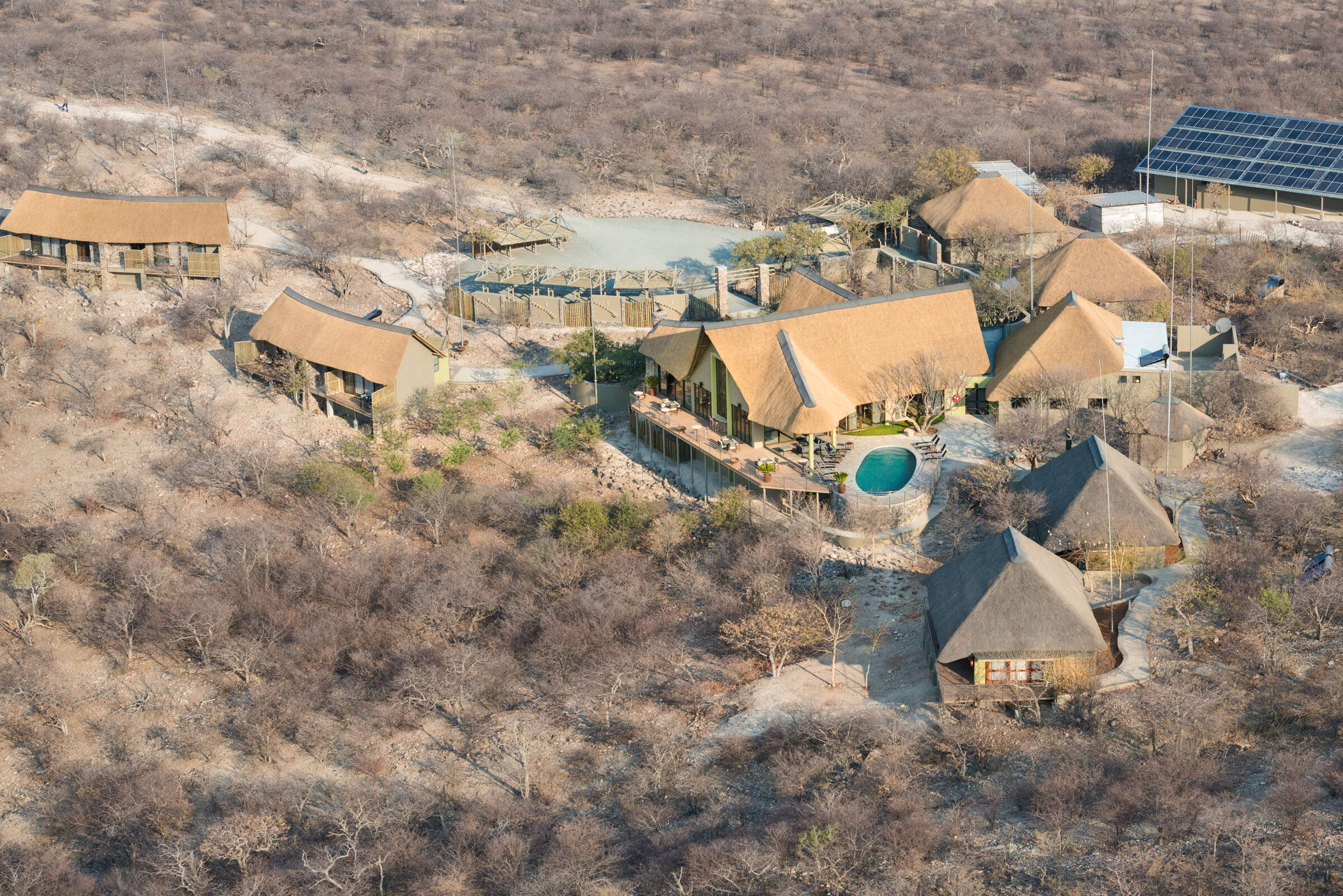
Safarihoek Lodge
At the heart of the private Etosha Heights Reserve, Safarihoek Lodge offers comfortable accommodation and excellent game-viewing.
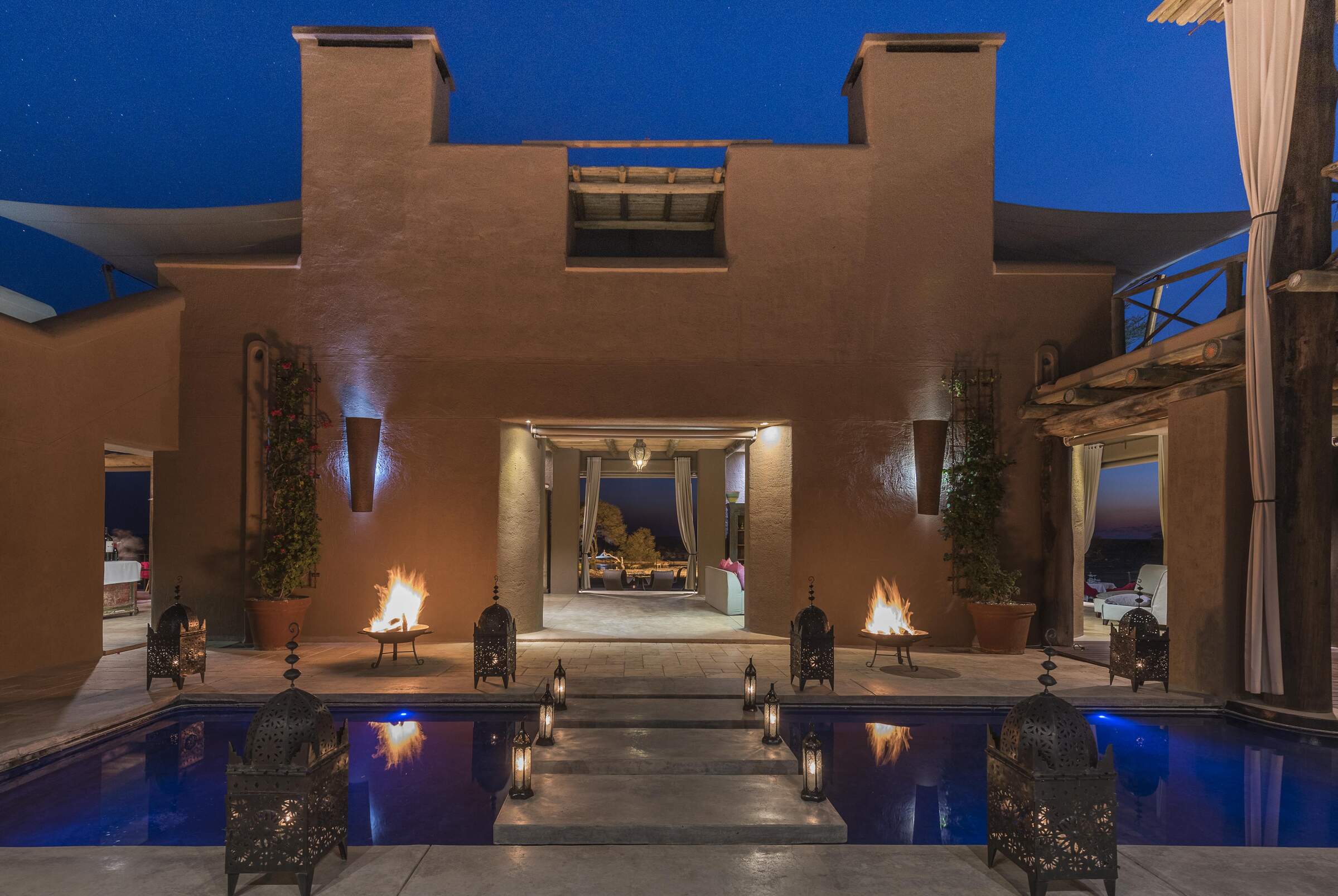
Onguma The Fort
The Fort is the jewel in the crown of the Onguma lodges, and arguably the whole of eastern Etosha.
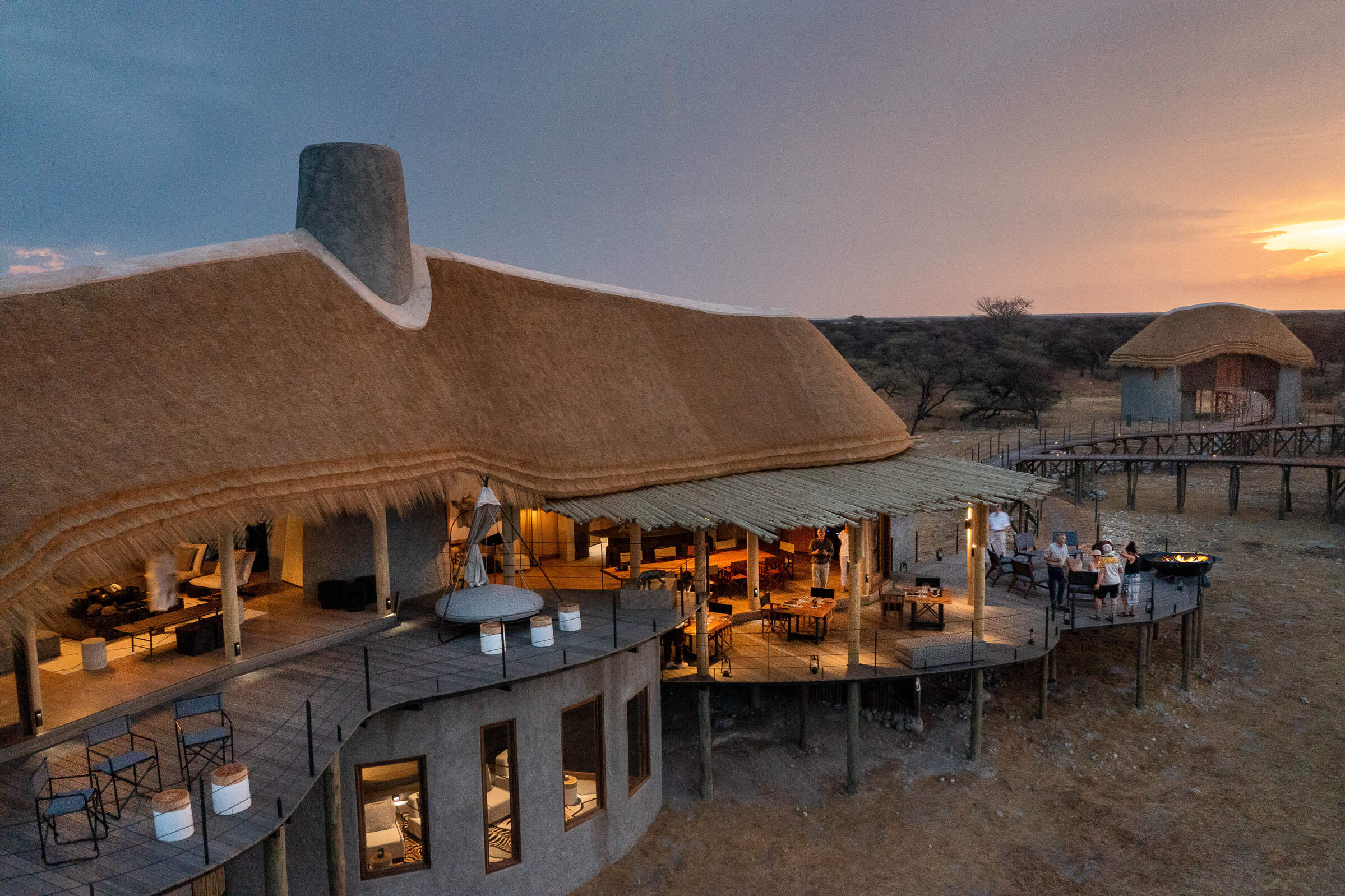
Onguma Camp Kala
For a bird’s eye view across African bush, the stilted rooms at Onguma Camp Kala are truly special.
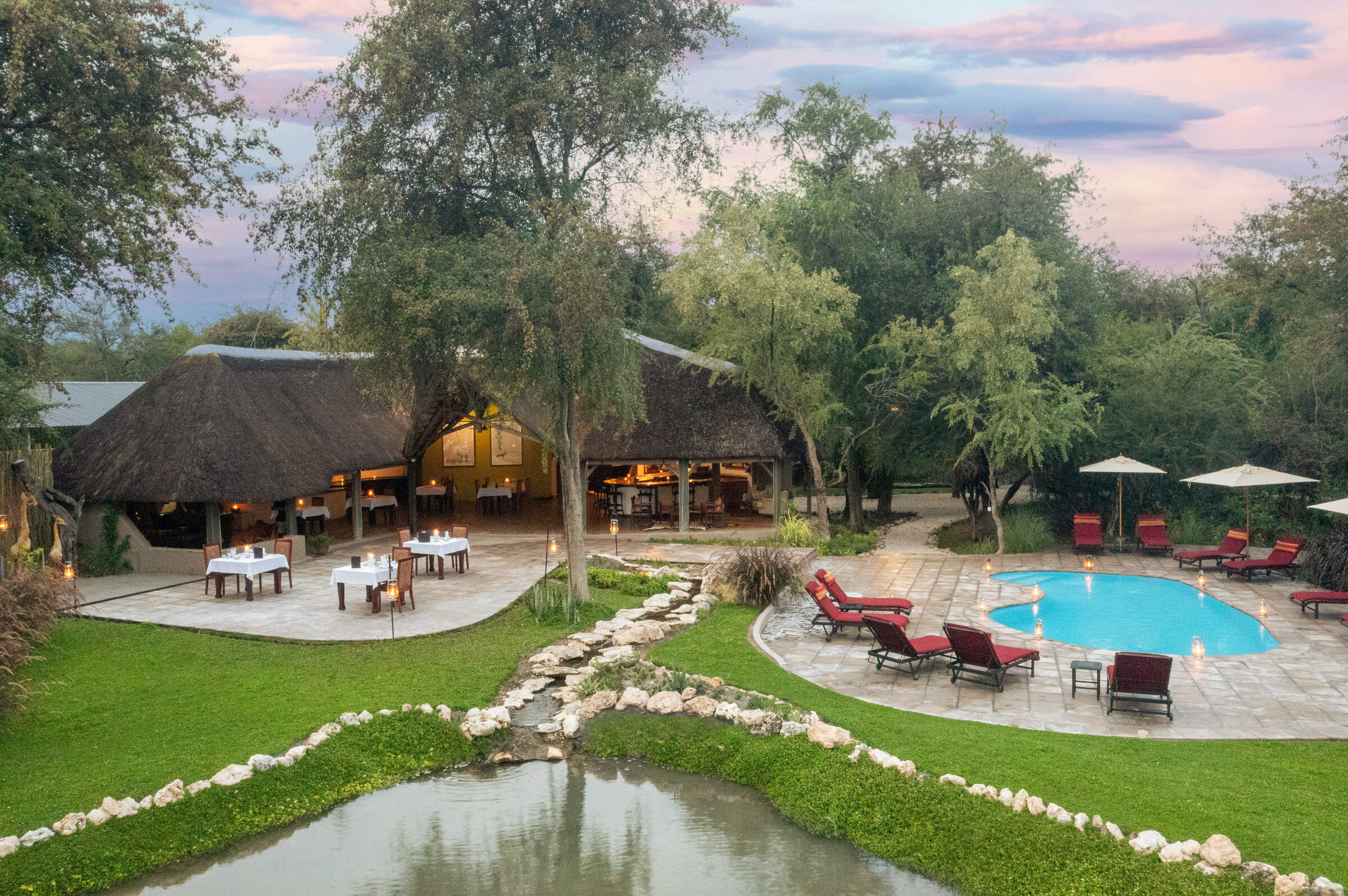
Onguma Forest Camp
From its woodland setting on the Onguma Reserve, Forest Camp is within easy striking distance of Namibia’s flagship national park.
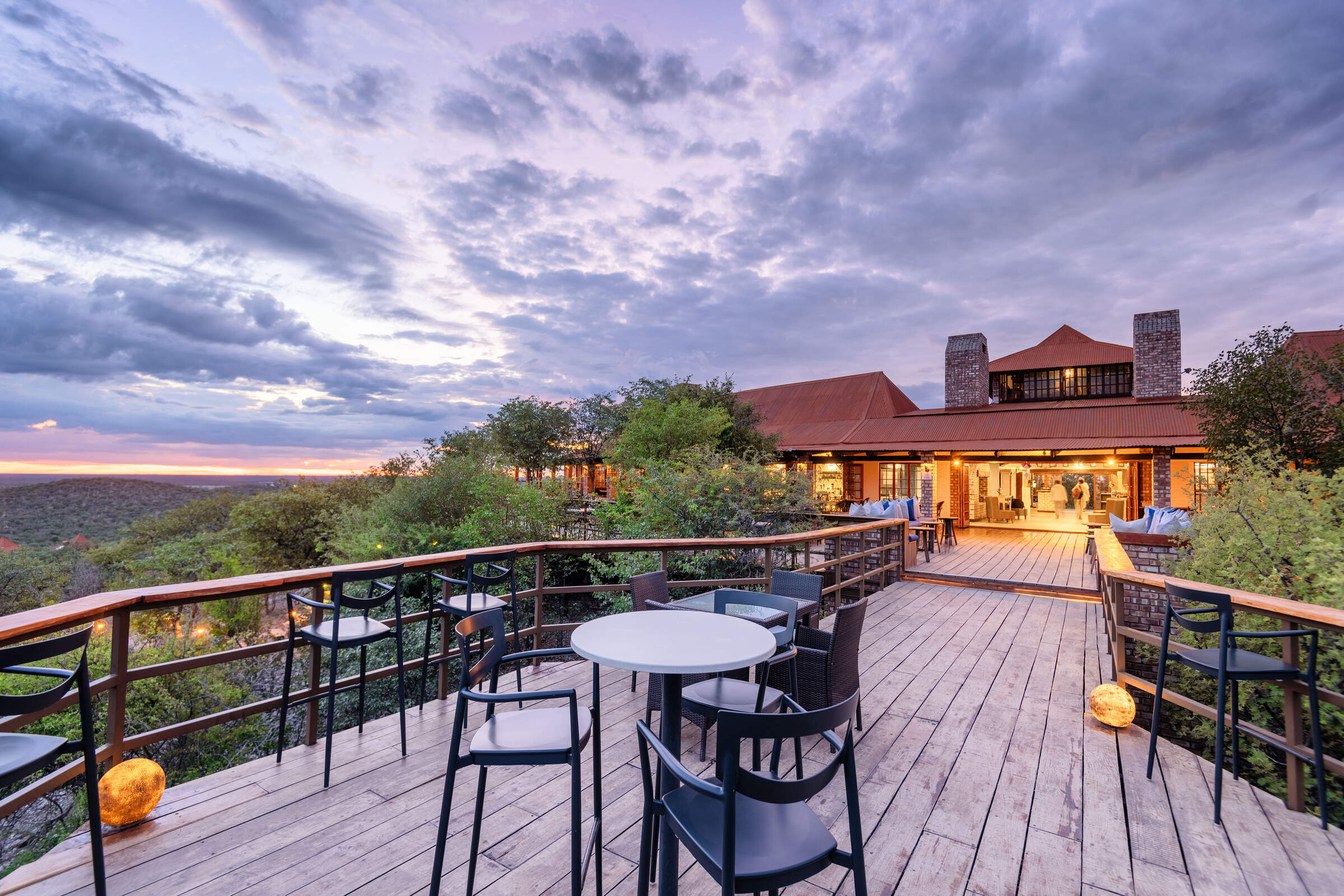
Etosha Safari Lodge
A short drive from Etosha National Park's southern entrance, Etosha Safari Lodge is a convenient base from which to explore the park.
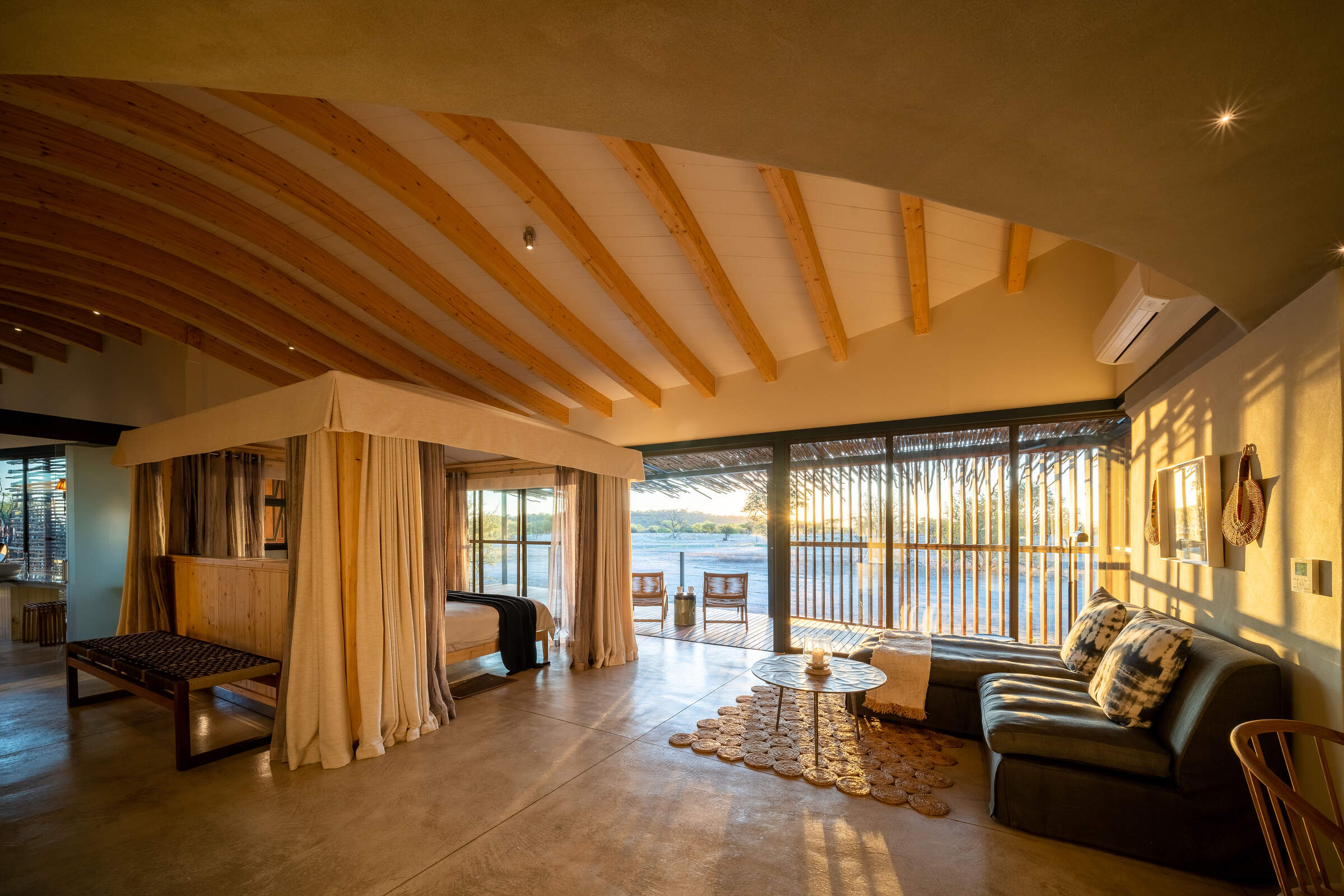
Andersson's at Ongava
With game drives on both its private reserve and in Etosha, Andersson's at Ongava also offers access to the Ongava Research Centre.
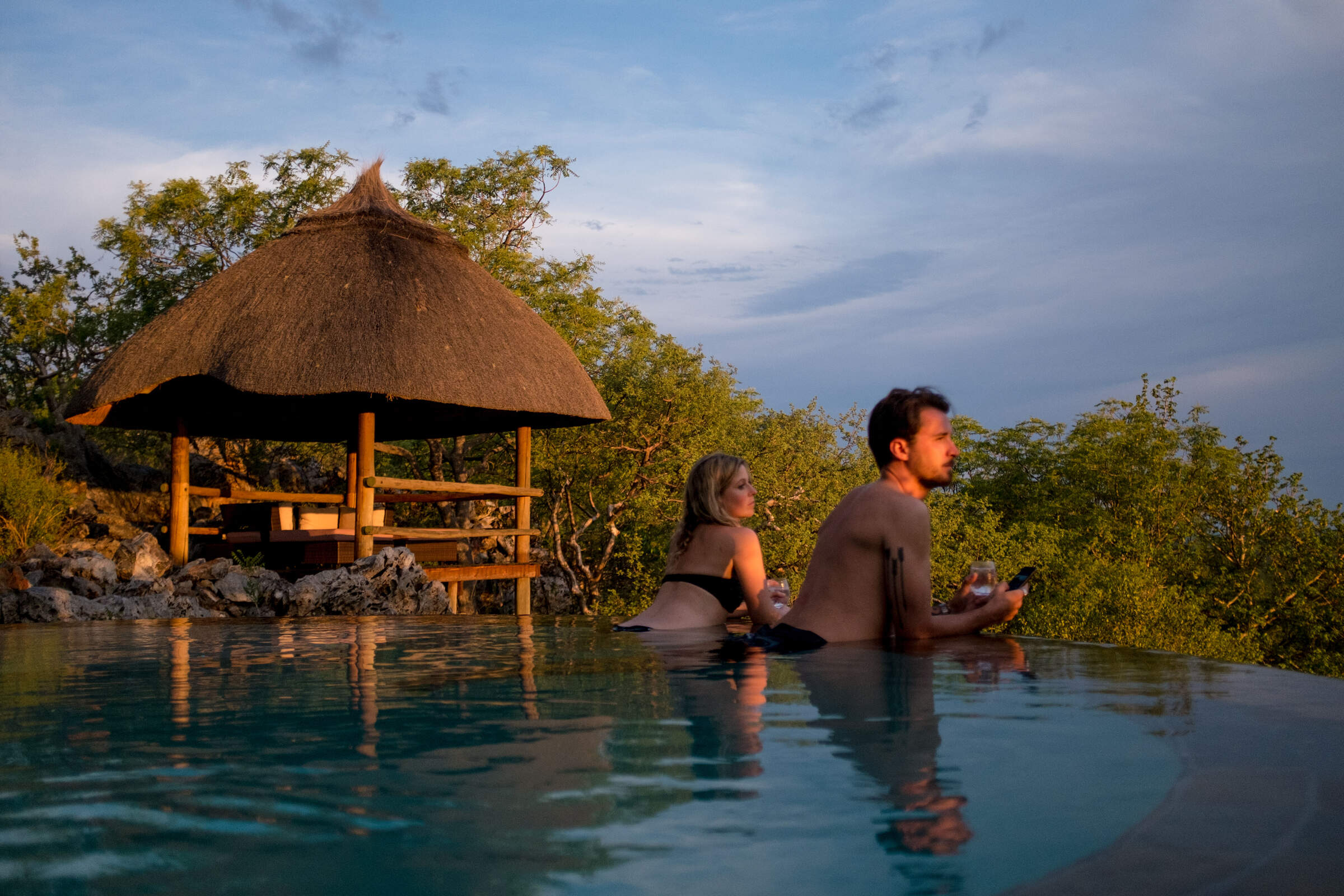
Little Ongava
The beautifully located and luxurious Little Ongava is a stunning place to stay in order to explore Etosha National Park and the private Ongava Reserve.
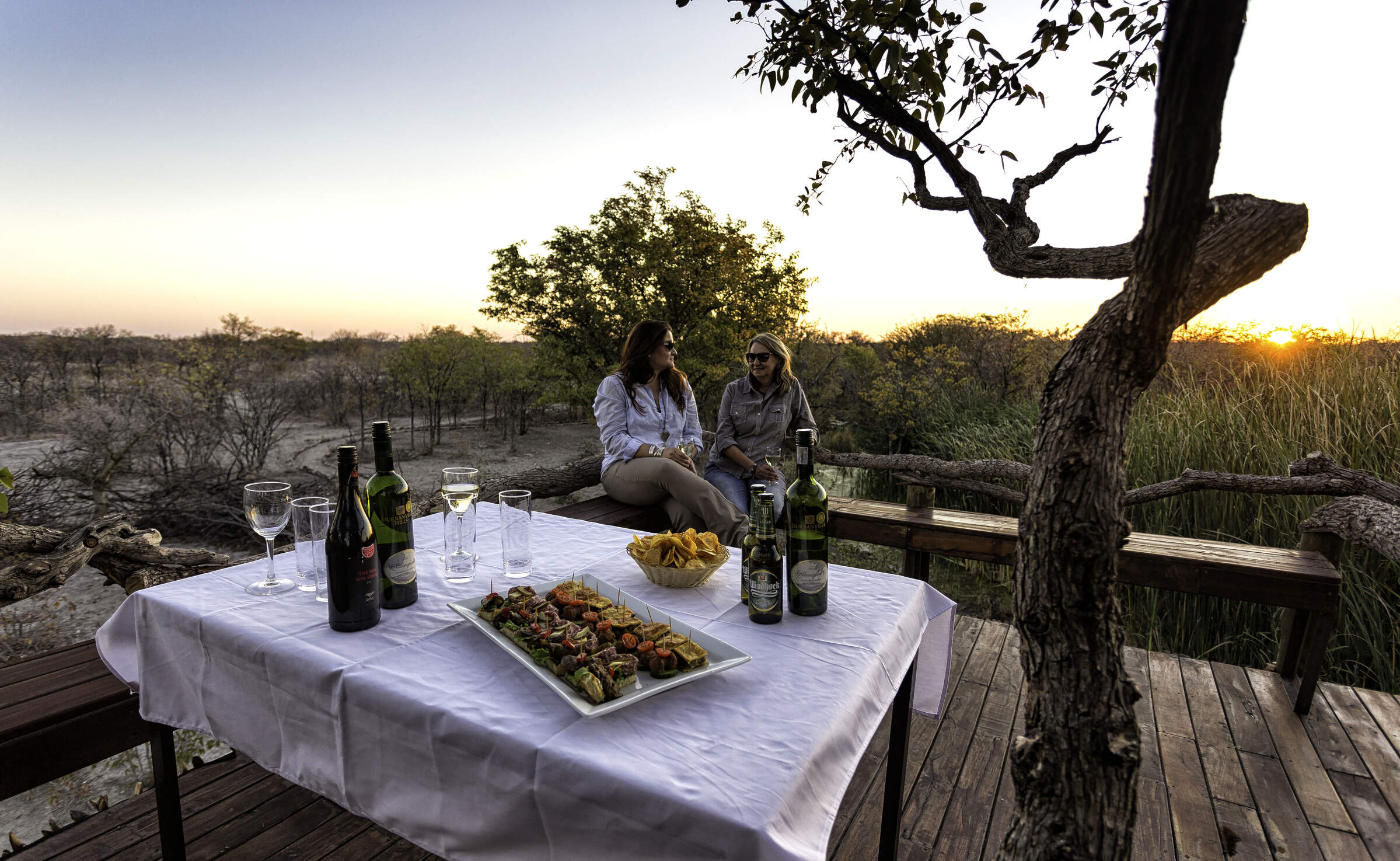
Taleni Etosha Village
Only 4km from Etosha's southern entrance, Taleni Etosha Village is an affordable base from which to explore the park.
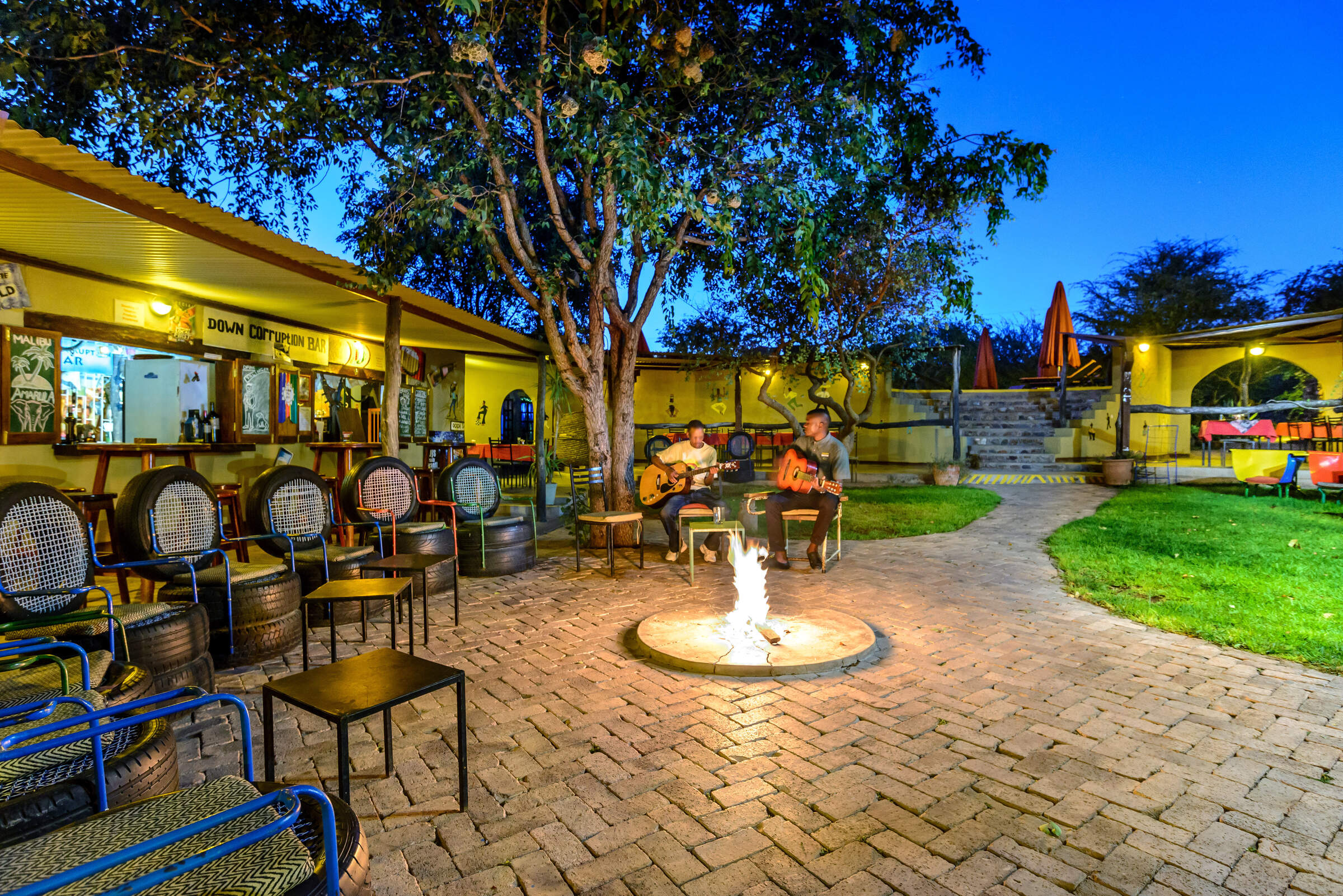
Etosha Safari Camp
Funky, low-key and very original, Etosha Safari Camp is well placed for visiting Etosha National Park on a self-drive or guided safari.
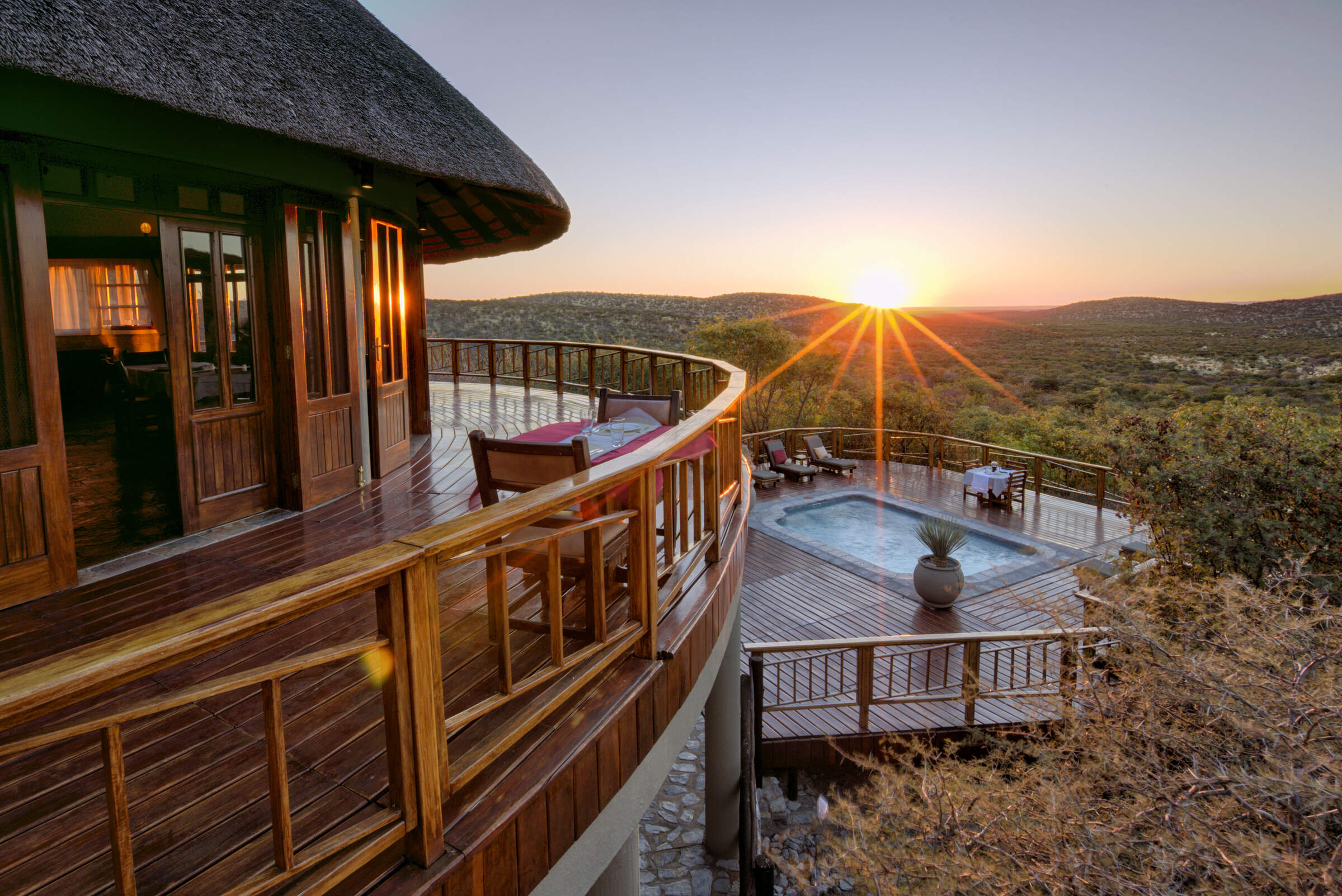
Mountain Lodge
In the heart of the private Etosha Heights Reserve, the family-friendly Mountain Lodge offers game drives and bush walks within an exclusive environment.
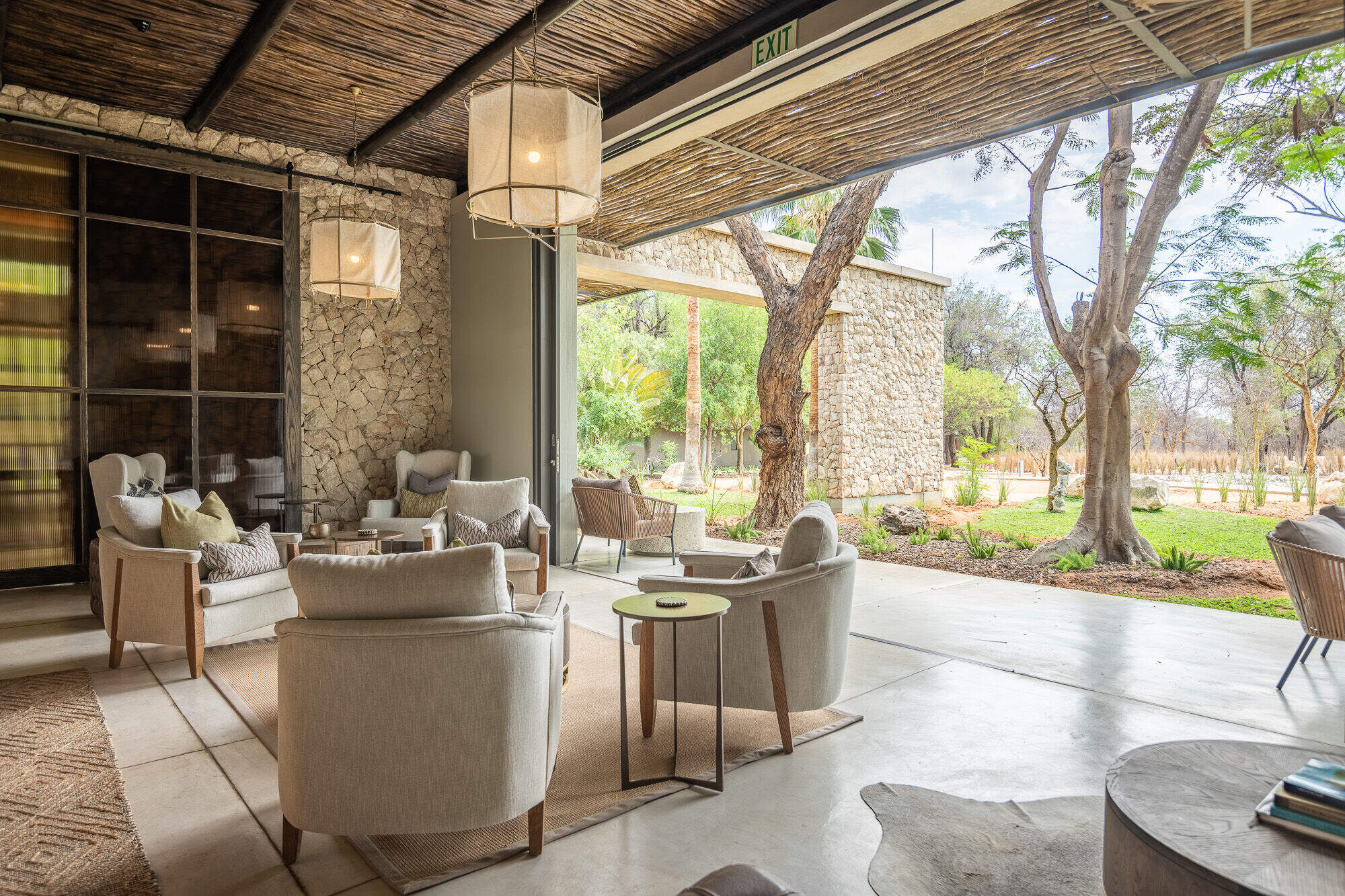
Mokuti Etosha Lodge
With 106 rooms, child-friendly Mokuti Etosha Lodge is more like a hotel than a lodge. Facilities to include a gym, spa, tennis courts and even a snake park.
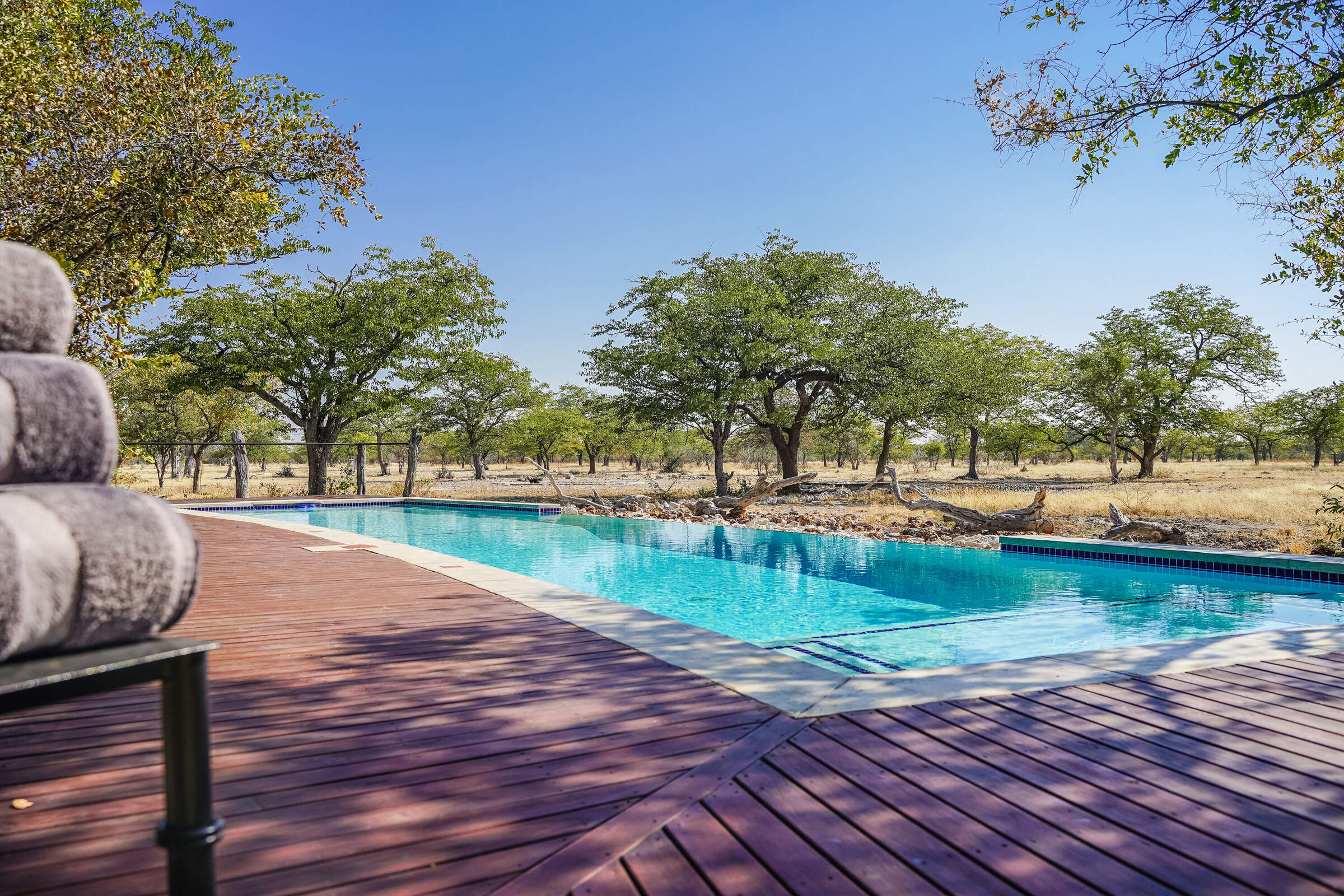
Etosha Oberland Lodge
A short drive from Etosha National Park's southern entrance, Etosha Oberland Lodge is a very comfortable base from which to explore the park, with excellent food.
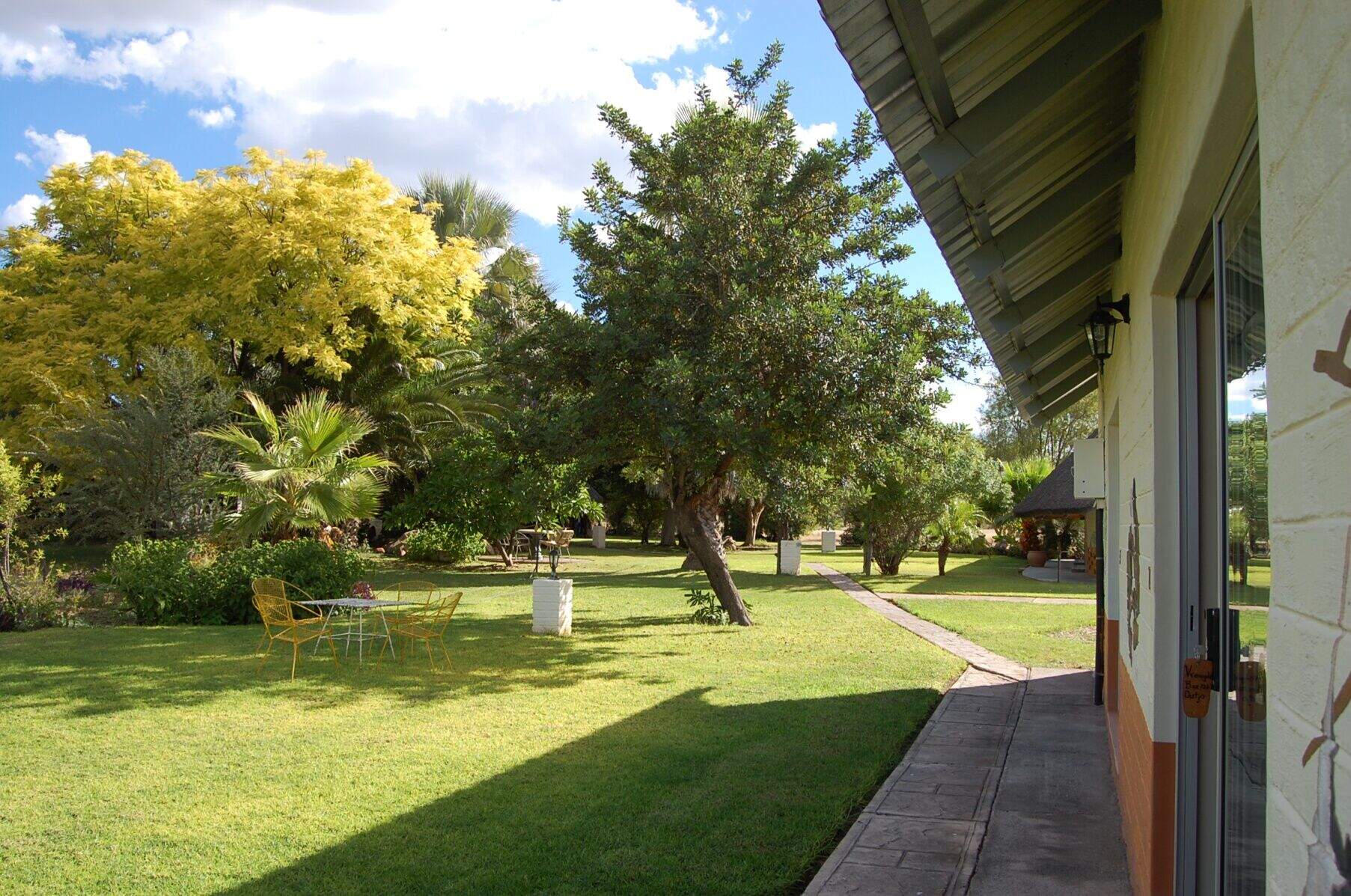
Vreugde Guest Farm
Vreugde Guest Farm is a delightful owner-run and working sheep farm where you can expect a warm welcome and charming hospitality.
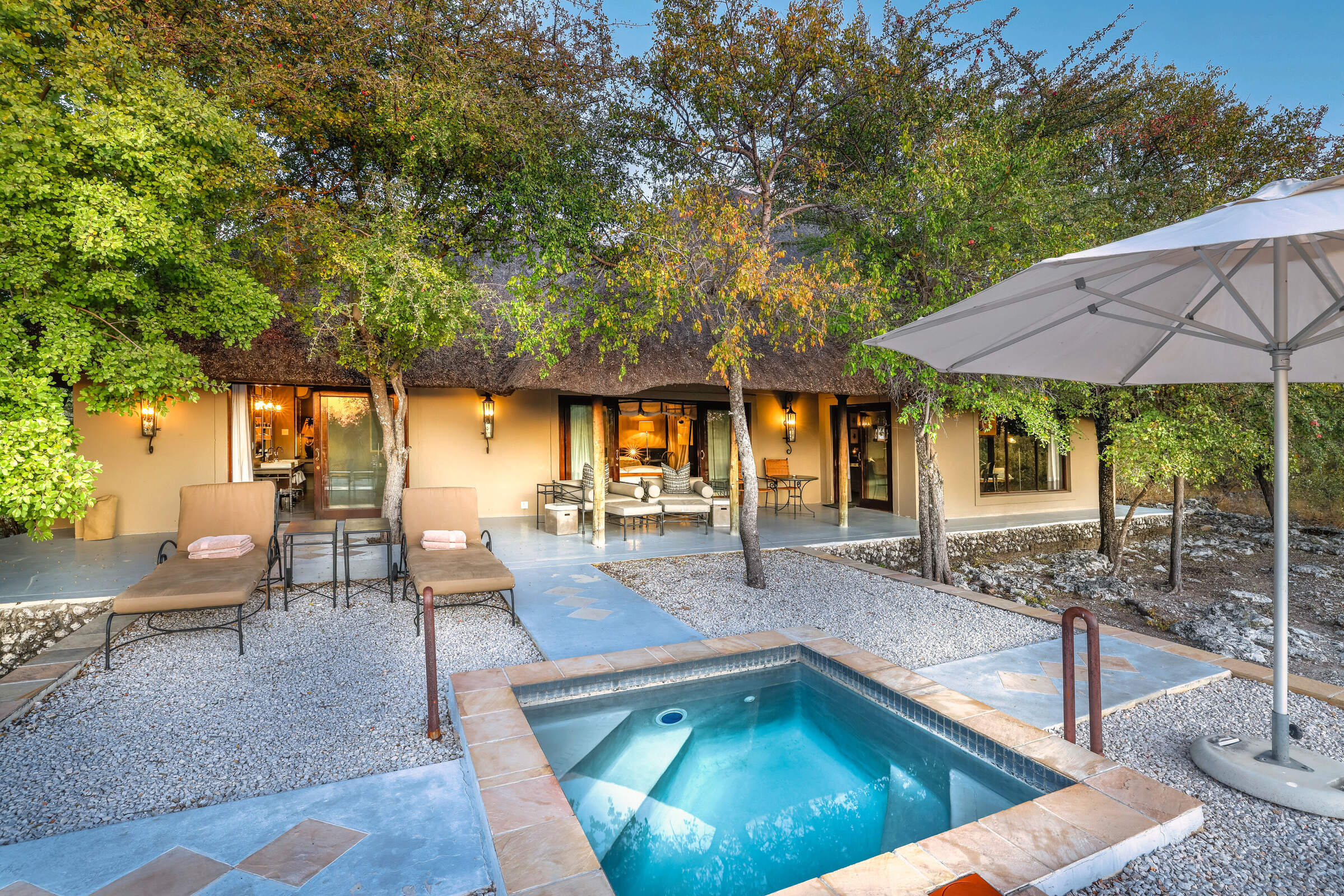
Villa Mushara
Offering luxury on a peaceful private reserve close to Etosha, Villa Mushara is a great choice for honeymooners & those wishing to indulge themselves.
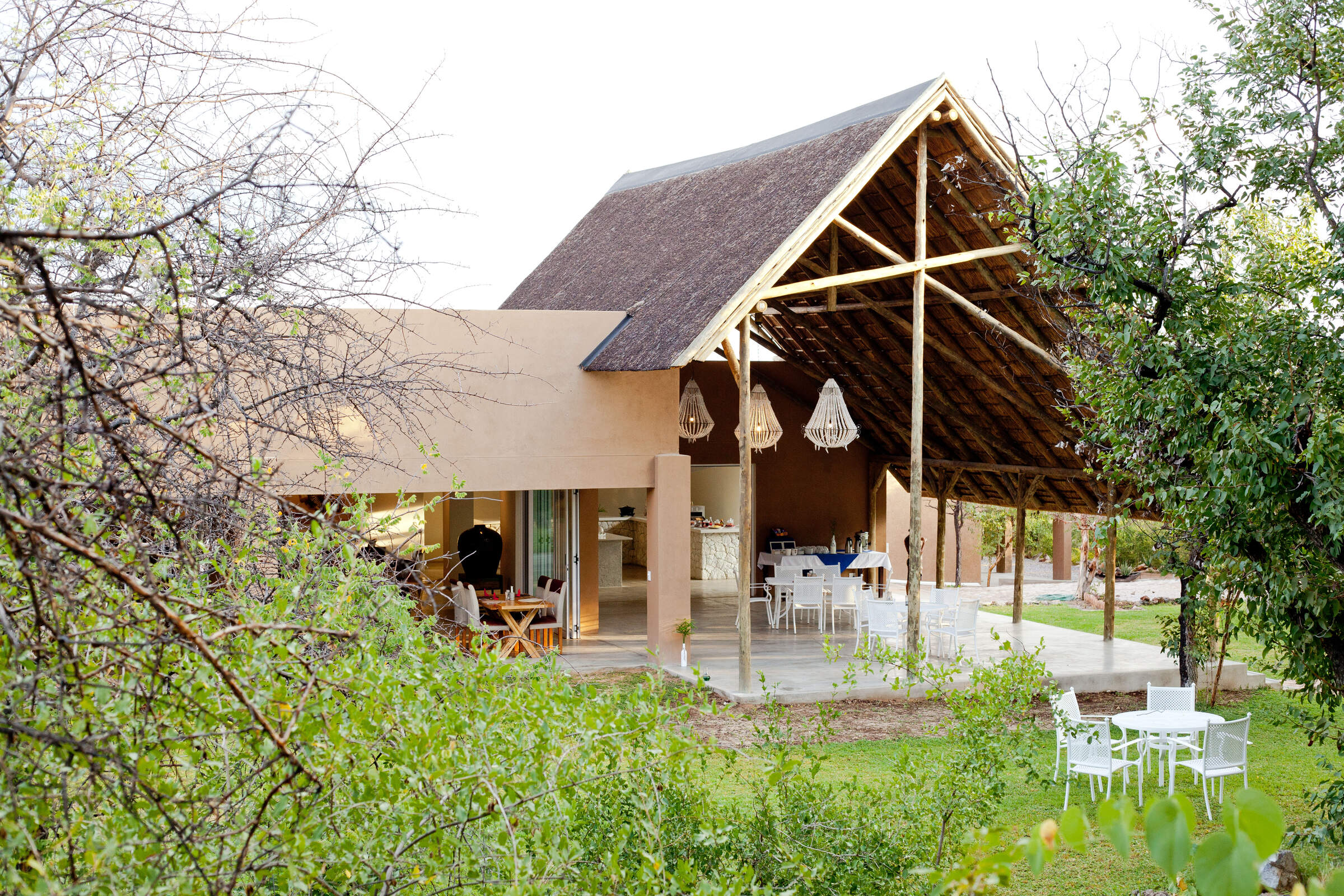
Toshari Lodge
Smart and professionally run, the hotel-style Toshari Lodge is well-placed for self-driving in Etosha National Park.
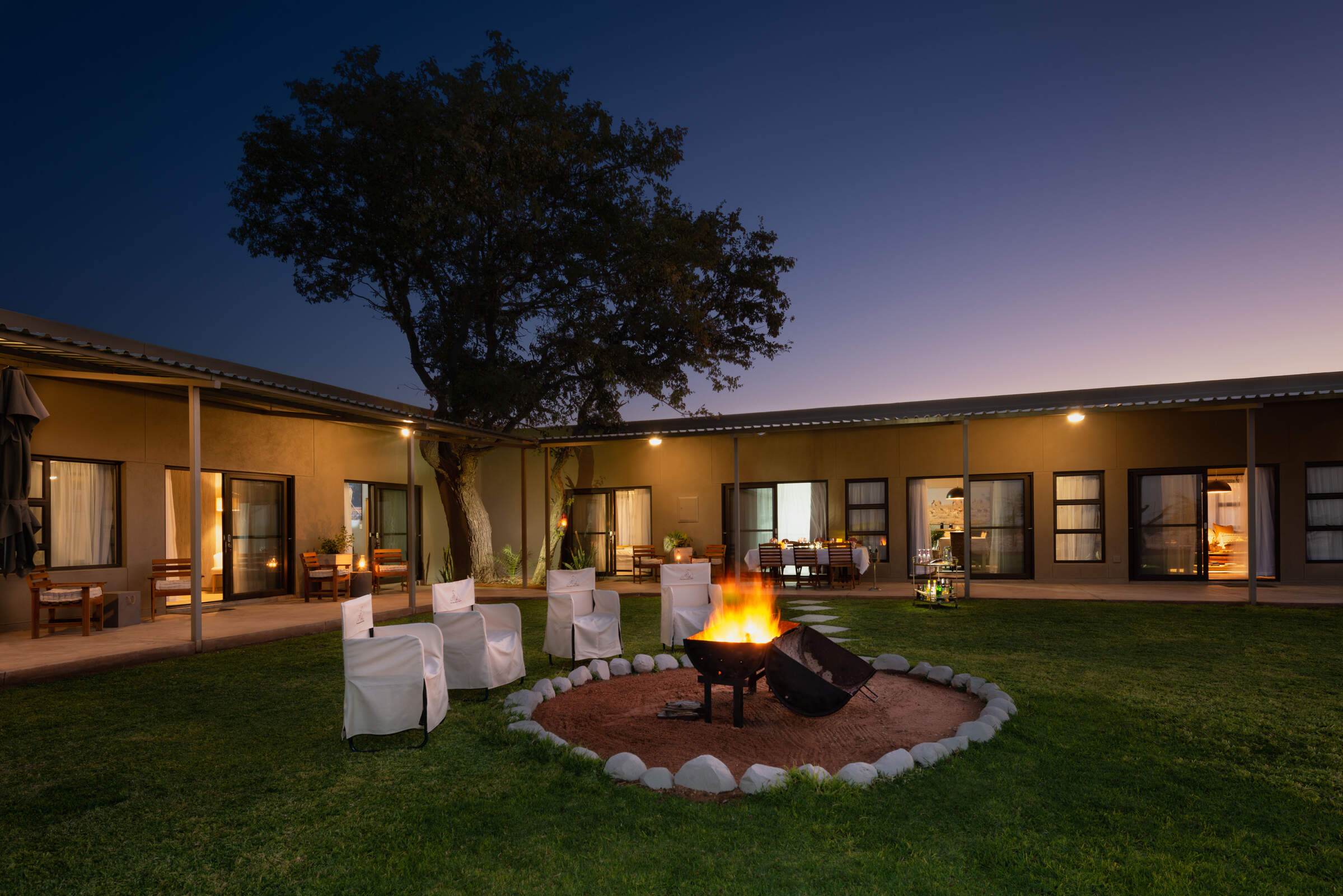
Safari House
The private Safari House on the Etosha Heights reserve is a great option families or friends travelling together.
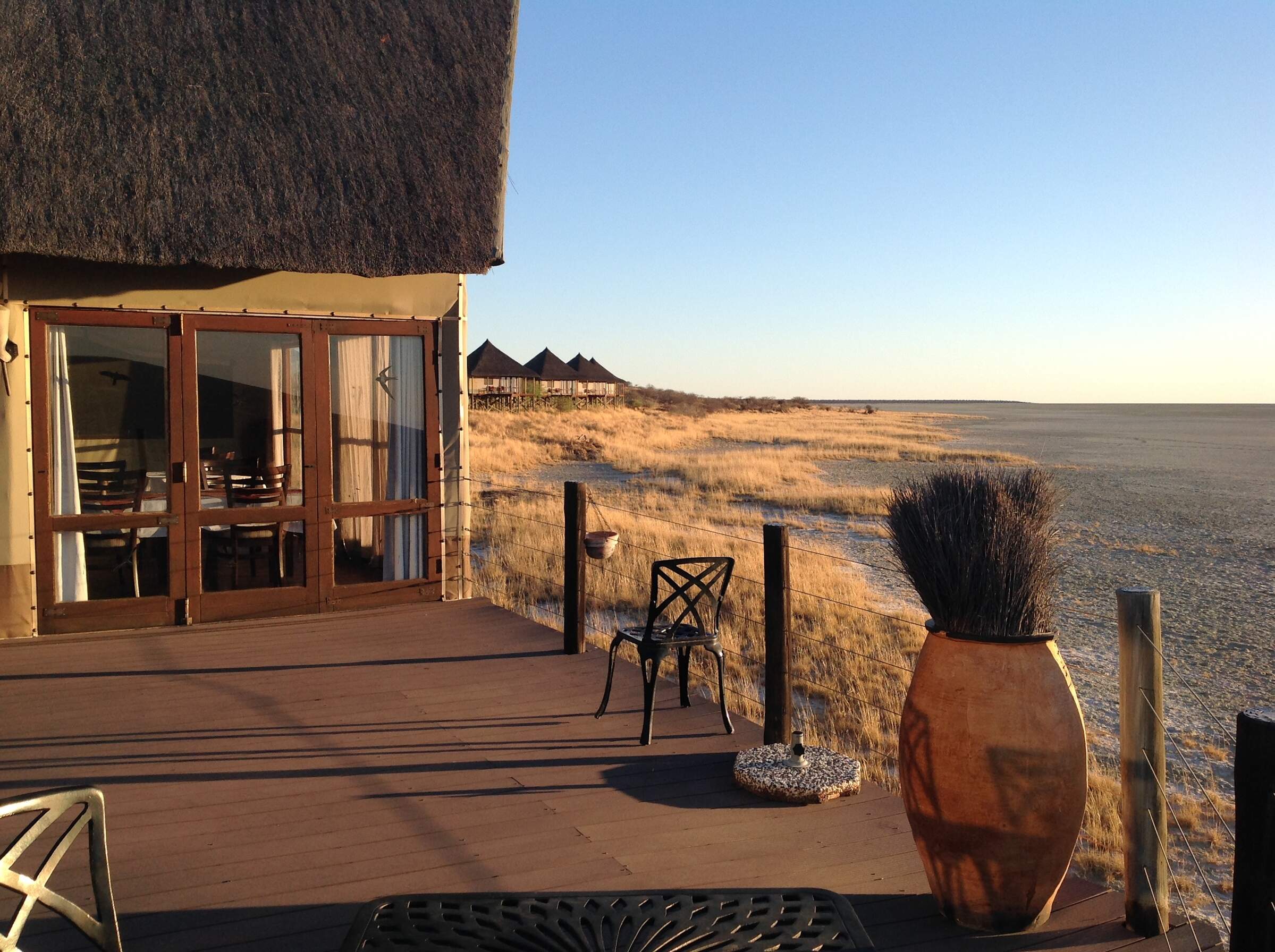
Onkoshi Camp
Onkoshi Camp is owned and run by Namibia Wildlife Resorts. Built on elevated wooden platforms it overlooks Etosha Pan.
When to go to Etosha National Park
Our month by month guide: What it's like to visit Etosha King Nehale in Etosha National Park
Jan
Feb
Mar
Apr
May
Jun
Jul
Aug
Sep
Oct
Nov
Dec
Etosha National Park in January
January marks the start of Etosha's main rainy season. The Etosha Pan, usually a vast expanse of white clay, may partially fill with water in good rainy season, attracting flamingos and other migratory birds. The landscape transforms into a lush green oasis, providing ample food for wildlife. Many animals give birth during this time, offering chances to see newborns.
While game viewing can be challenging due to dispersed wildlife and thick vegetation, birdwatching is excellent. Migratory species arrive and birds display breeding plumage. The Okaukuejo and Halali waterholes remain active, though less crowded than in dry months. Visitors should be prepared for occasional thunderstorms and potentially muddy roads, especially around Fischer's Pan.
The vibrant greenery and the presence of young animals make this a fantastic time for photography.
- Variable weather: hot, dry or humid with rain
- Occasional localised thunderstorms in Etosha
- Many animals with young; spectacular birdlife
- Wildlife dispersed, harder to see in Etosha
- Fewer tourists; low rates at most lodges
Our view
This is not a great time to visit
Weather in January
Etosha National Park in February
February is typically Etosha's wettest month. The Etosha Pan may be partially filled, creating a spectacular sight and attracting numerous waterbirds, including flamingos. The landscape is vibrantly green, with many animals raising their young.
While game viewing can be more challenging due to the abundance of water and vegetation, patient observers can spot a variety of wildlife, and share their sightings with fewer other visitors. Birdwatching is excellent, with many species in breeding plumage. The Fairy Tale Forest near Okaukuejo is particularly lush during this time.
Visitors should be prepared for occasional thunderstorms and potentially challenging road conditions, especially in the eastern part of the park. The lush environment and the presence of young animals provide a unique opportunity to witness the park's life cycle.
- Variable weather with occasional thunderstorms
- Bush feels alive; birdlife at its peak in Etosha
- Wildlife in Etosha dispersed, harder to spot
- A variety of newborn and young wildlife to see
- Few tourists; lowest rates for accommodations
Our view
This is not a great time to visit
Weather in February
Etosha National Park in March
As Etosha's main rains taper off, March offers a mix of wet and dry days. The landscape remains green and alive, with insects and smaller animals more easily seen, and many birds and animals are finishing raising their young.
The Etosha Pan may still hold some water, attracting flamingos and other waterbirds. Game viewing improves as the month progresses and animals start to herd together at permanent water sources. The Okaukuejo, Halali, and Namutoni waterholes become increasingly active.
Birdwatching remains excellent, with many migrant species still around. The Dolomite Camp area in the west offers good chances to spot rarer antelope species like black-faced impala.
The transition from wet to dry conditions provides a fascinating glimpse into the park's seasonal changes.
- Weather variable; thunderstorms less frequent
- Animals well-fed after months of abundance
- Wildlife in Etosha still dispersed, harder to see
- Migrant birds prepare to leave the park
- Few visitors; rates often low at Etosha lodges
Our view
A good time to visit, with pros & cons
Weather in March
Etosha National Park in April
April typically sees dry weather dominating in Etosha, with decreasing chances of rain. The landscape remains relatively green, and animals are in excellent condition with shiny coats. Increasing numbers of elephants seen as the herds begin to use the permanent water sources. The Okaukuejo waterhole becomes particularly active, especially in the evenings.
Photographers benefit from clear air and lush, green backdrop. Night drives from camps like Halali offer chances to see nocturnal animals. Birdwatching remains good, though some migratory species begin to depart, and the Fischer's Pan area can still be productive for waterbirds if there's residual water from the rainy season.
The shift towards drier conditions improves the chances of wildlife sightings.
- Becoming drier and cooler, especially at night
- Few visitors except around Easter; low rates
- Wildlife in Etosha still relatively spread out
- Migrant birds have largely left the park
- Fresh air and often green landscapes in Etosha
Our view
A good time to visit, with pros & cons
Weather in April
Etosha National Park in May
May marks the transition to Etosha's dry season. The landscape starts to dry out, but may still retain some greenery. Wildlife increasingly gathers around permanent water sources, making game viewing more predictable. The Okaukuejo, Halali, and Namutoni waterholes become excellent spots for animal observation – especially when floodlit after dark. Night drives offer opportunities to see nocturnal species like leopards and owls.
The Etosha Pan is usually dry, creating a stark, shimmering backdrop for photography. Birdwatching remains good, with 340 different species recorded in the park. The western part of the park, accessible from Dolomite Camp, offers chances to see rarer species like black rhino in a less frequently explored environment. The dry season's onset brings a new rhythm to the park's wildlife dynamics.
- Lovely weather: dry, warm days & cool nights
- Etosha drying out; landscapes still partly green
- Fantastic air clarity; ideal for photography
- Visitor numbers low; lodge rates still low
- Wildlife starting to gather at Etosha waterholes
Our view
A very good time to visit
Weather in May
Etosha National Park in June
June brings cooler temperatures with clear skies to Etosha. The landscape is drying out, encouraging animals like elephants, rhino and giraffe to waterholes. This makes for excellent game viewing, especially at popular spots like Okaukuejo and Halali. Night drives on private Etosha reserves, like Ongava, are particularly productive.
The dry Etosha Pan creates mirages and a unique backdrop for photography, perhaps a lone ostrich crossing the stark salt crust. Birdwatching remains rewarding, with bright colours standing out in drier vegetation. The Namutoni area, with its fort, provides a mix of wildlife viewing and historical interest.
Cooler temperatures making walking safaris enjoyable in Etosha’s adjacent wildlife reserves, like Etosha Heights.
- Clear days, cold nights in Etosha National Park
- Great air quality; perfect for photographers
- Moderate lodge rates; shoulder season begins
- Wildlife gravitates to Etosha's waterholes
- Some greenery remains in parts of the park
Our view
A very good time to visit
Weather in June
Etosha National Park in July
July is prime time for wildlife viewing in Etosha as animals, in particular predators, are more active later in cool mornings and earlier in the afternoons. The dry landscape concentrates animals around waterholes, making for predictable and spectacular sightings. The Okaukuejo waterhole is particularly active, especially at night when black rhinos often visit and jostle for position with elephants.
The stark white Etosha Pan creates a unique backdrop for photography, with heat mirages shimmering on the horizon.
The dry season's peak offers unparalleled wildlife viewing opportunities. Game drives along the southern edge of the pan offer excellent opportunities to see large herds of zebra, wildebeest, and antelope. Birdwatching is rewarding around waterholes, with species like eagles and vultures frequently sighted.
- Dry days, crisp nights; excellent for stargazing
- European holidays begin; more families visit
- Peak season; high rates, lodges often full
- Fantastic wildlife watching
- Animals concentrate around Etosha waterholes
Our view
A very good time to visit
Weather in July
Etosha National Park in August
August is the height of the dry season in Etosha, offering excellent wildlife viewing opportunities. Animals concentrate around waterholes, with a variety of predators and prey often seen at any one time. Night viewing at the more secluded yet floodlit waterhole at Halali is often rewarded with sightings of shyer leopard and porcupine.
The dry season's intensity brings wildlife into sharp focus. The open plains along the edge of the Etosha Pan are good for seeing large herds of zebra and wildebeest, and often cheetah too. Predators often lie in wait for their prey near waterholes offering sightings of hunts to patient game viewers.
Birdwatching remains rewarding, with raptors like bateleur and martial eagles frequently sighted.
- Dry days, cold nights; clear skies in Etosha
- Busy by Namibian standards; family rooms full
- Peak season; high rates, advanced booking needed
- Excellent wildlife viewing in Etosha National Park
- Large herds gather at Etosha's waterholes
Our view
Fantastic: the very best time to visit
Weather in August
Etosha National Park in September
September offers peak wildlife viewing in Etosha. The extreme dry conditions concentrate animals around waterholes, making for spectacular sightings of multiple species. The Okaukuejo waterhole is particularly active, with elephants, rhinos, and lions frequently visiting.
The last months of the dry season showcases the park's wildlife at its most concentrated. The stark landscape of the dry Etosha Pan creates dramatic backdrops for photography. Game drives along the pan's edge offer chances to see large herds of zebra, springbok, and oryx as well as lion prides and cheetah. The western part of the park, accessible from Dolomite Camp, often provides a more exclusive safari experience with good rhino sightings. Night drives on adjacent private reserves like Hobatere offer opportunities to see nocturnal animals such as genets and aardwolves.
Birdwatching is excellent, with species standing out clearly in the sparse vegetation.
- One of the best months for Etosha wildlife viewing
- Warm days, cold nights; temperatures rising
- Colourful birds stand out against a starker backdrop
- Etosha's waterholes teem with diverse wildlife
- High season; book Etosha accommodations early
Our view
Fantastic: the very best time to visit
Weather in September
Etosha National Park in October
October is typically Etosha's hottest and driest month, offering excellent wildlife viewing. The intense heat and dry conditions heighten the drama of wildlife interactions.
Animals concentrate heavily around waterholes, with spectacular sightings common at Okaukuejo, Halali, and other permanent water sources. Patient photographers spending time at waterholes are richly rewarded. Large herds of zebra, wildebeest, and various antelope species can be seen along the pan's southern edge. Predator sightings, including lions and cheetahs, are frequent as they target gathered and weakened prey. Thinning vegetation at Namutoni makes it easier to spot the dimunitive Damara dik dik – Namibia’s smallest antelope.
Birdwatching remains rewarding, with raptors and colourful rollers often spotted.
- Peak wildlife-viewing month in Etosha National Park
- Hot and dry; Etosha feels like a desert
- Air can be hazy with dust in some areas
- Peak time; expect high season rates in Etosha
- Etosha lodges often full, especially early October
Our view
A very good time to visit
Weather in October
Etosha National Park in November
November marks the transition to Etosha's rainy season, bringing change to the landscape and wildlife behaviour. Early rains may green the vegetation, dispersing some wildlife from waterholes. However, game viewing remains good, especially around permanent water sources like Okaukuejo and Halali’s floodlit waterholes.
The first rains can create dramatic scenes as animals celebrate the water's arrival, with plains game often giving birth. Predators often give birth at this time too, to coincide with the time of plenty. Migratory birds begin to return, and birds take to the skies in spectacular aerial shows as they catch more active insects.
Seasonal wildflowers and dramatic, thundery skies add interest to photographic compositions. Summer rains bring reptiles such as tortoises and chameleons out into the open. The onset of rains brings a refreshing change to the park's ecosystem.
- Variable month in Etosha, depending on rains
- If rain comes, explosion of vegetation and life
- Baby animals often born around mid-month
- Shoulder season; mid-range rates offer value
- Showers more likely later in the month in Etosha
Our view
A good time to visit, with pros & cons
Weather in November
Etosha National Park in December
December is often a drier month before January sees the main rainy season begin. The landscape begins to show green from November's rain and the odd rainshower in December. Many animals have young, so there’s the chance to watch frolicking calfs and lambs.
The combination of rainfall and sunshine rejuvenates the park's landscapes and wildlife. While wildlife disperses away from the waterholes with increased water availability, game viewing remains good, especially on the open plains along the southern edge of Etosha Pan. Birdwatching is excellent, with many species in breeding plumage and displaying for mates as well as migrant species arriving.
Visitors should be prepared for occasional thunderstorms and potentially muddy roads, especially in the eastern part of the park.
- Hot, sometimes humid with cooling showers
- Landscapes green where rain has fallen in Etosha
- New life and energy in the park's ecosystem
- Excellent for birdwatchers in Etosha
- Larger animals may be harder to spot
Our view
This is not a great time to visit
Weather in December

Looking for inspiration on where to travel next?
Visit our trip chooser to explore your options and find inspiration for your perfect African adventure
Inspire me